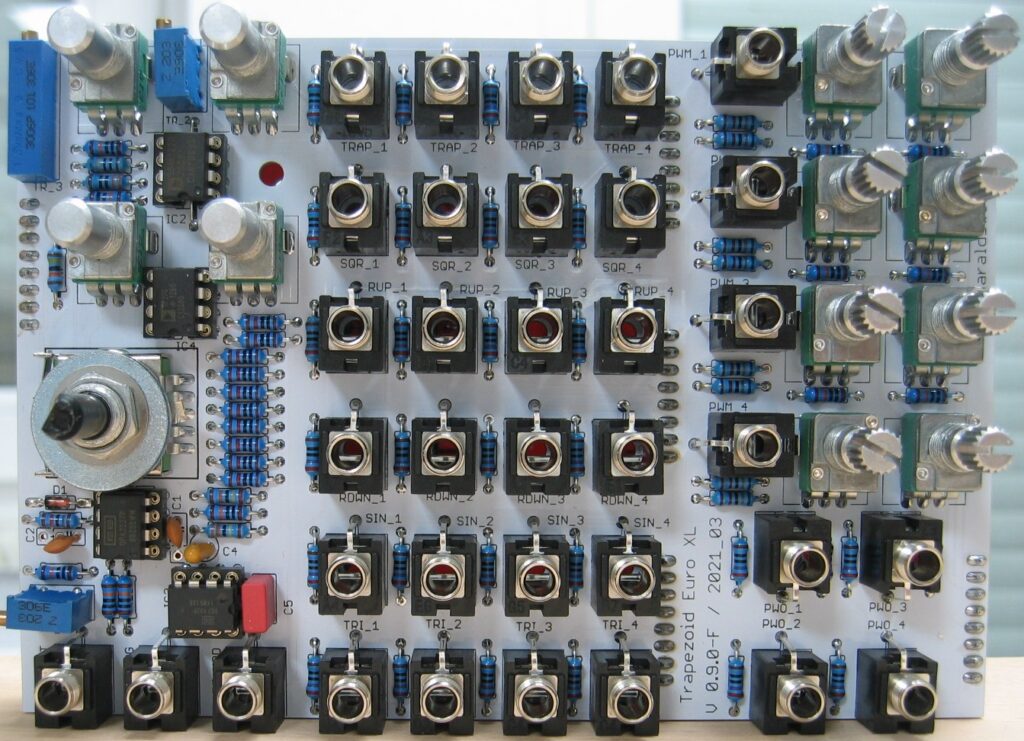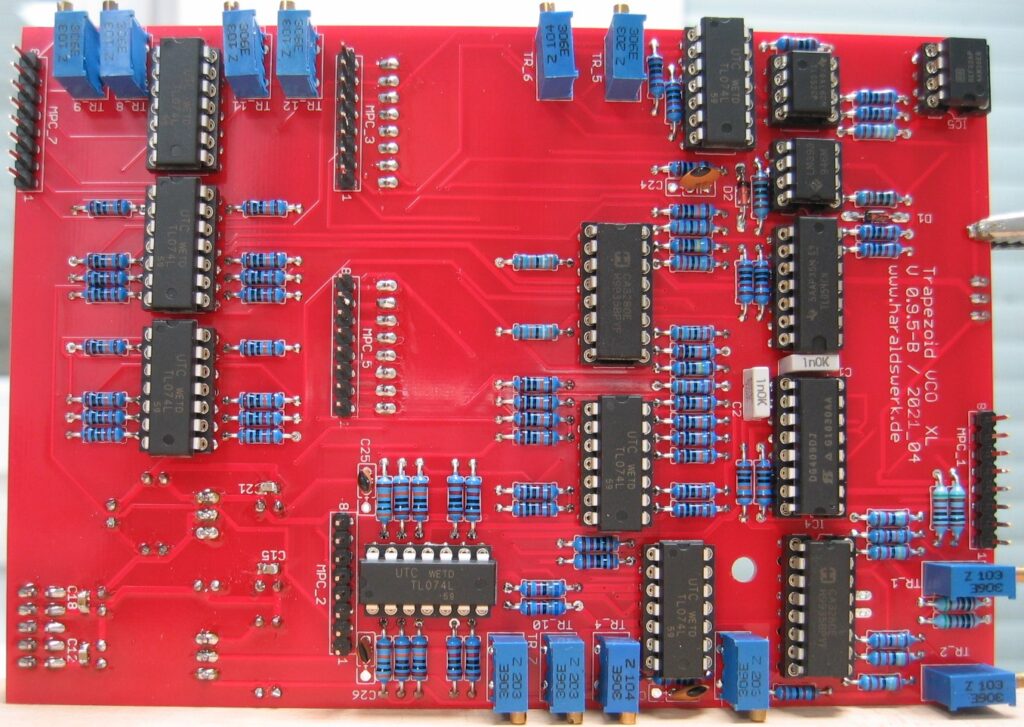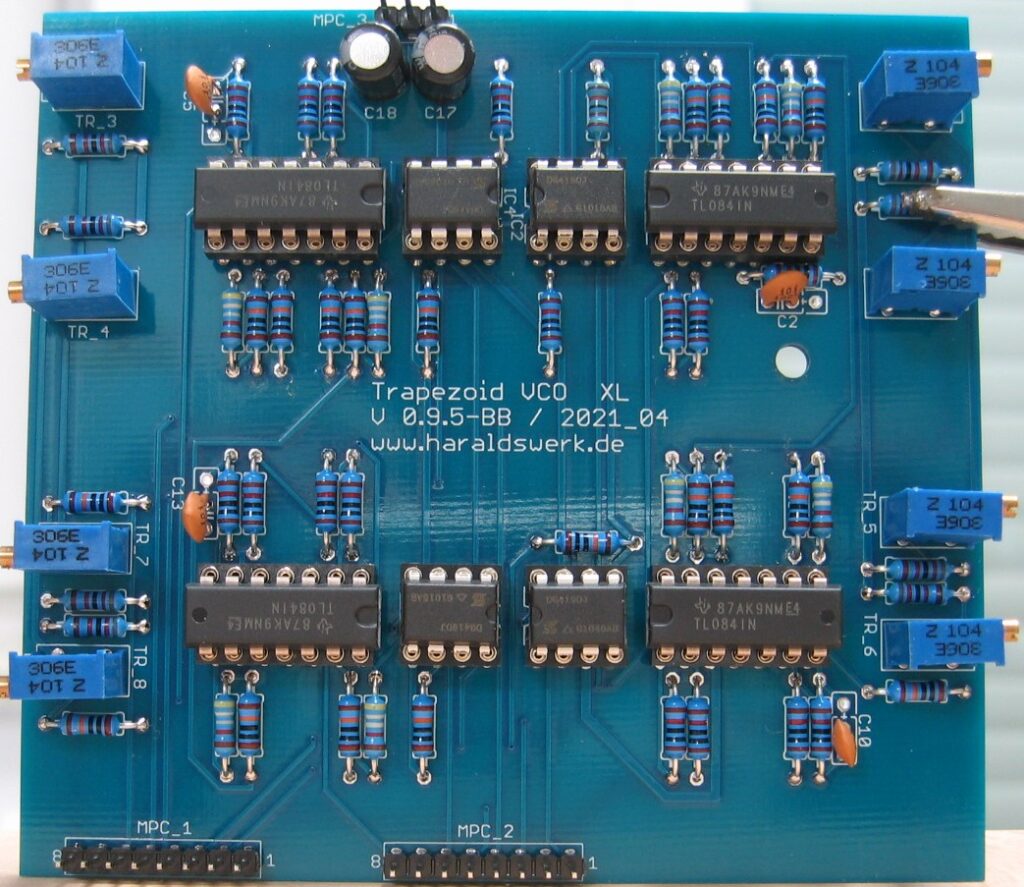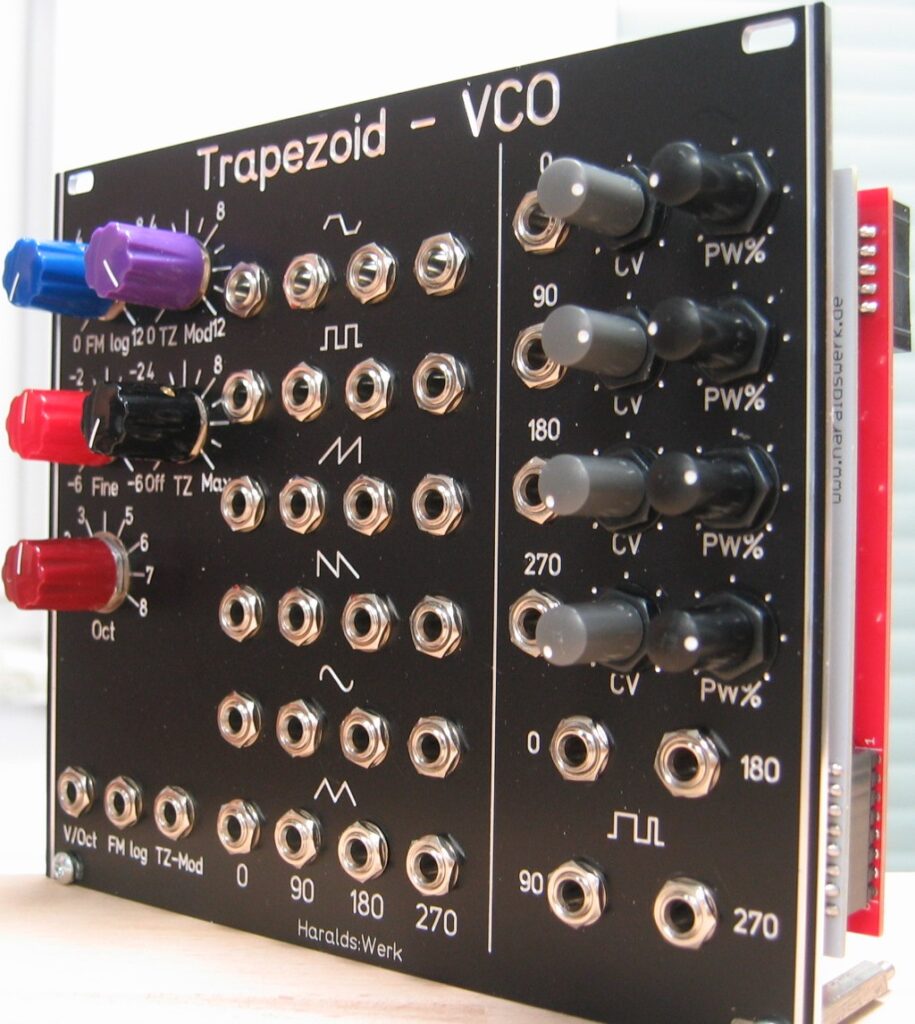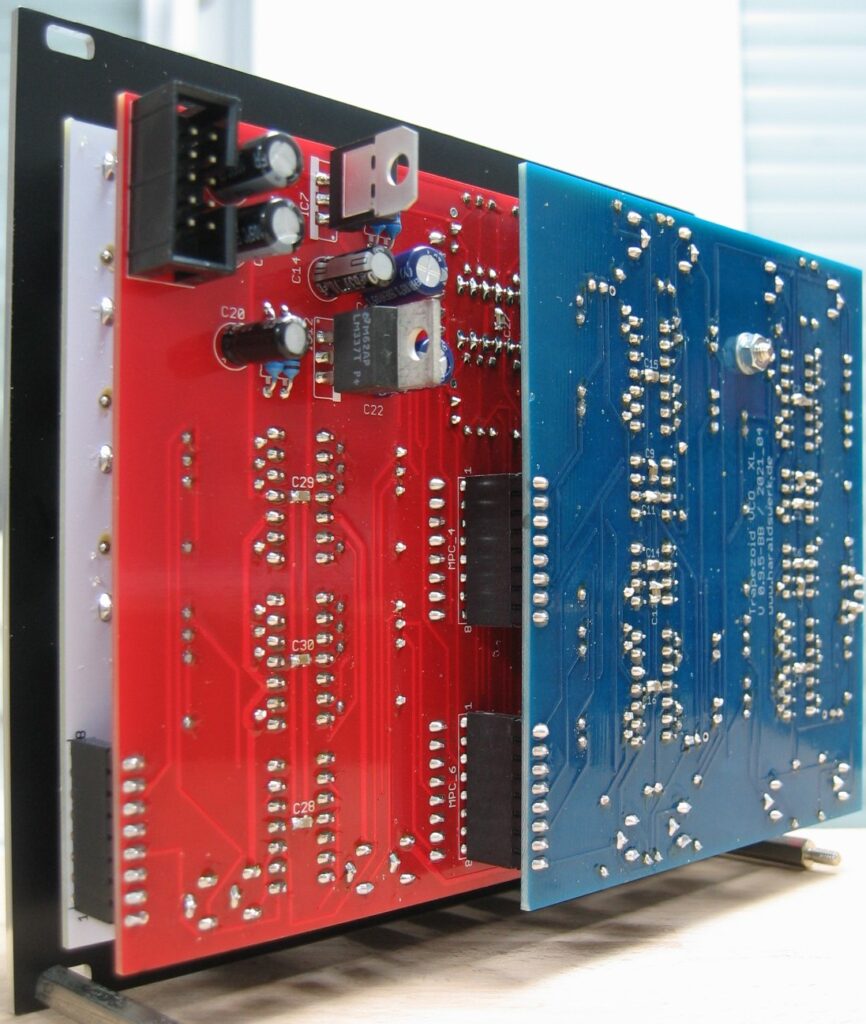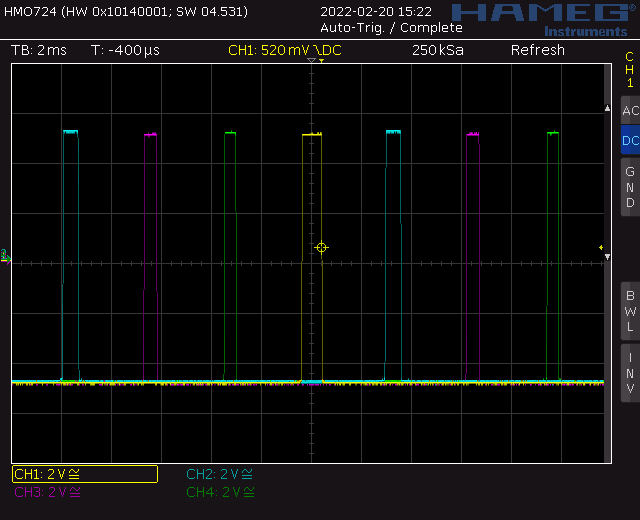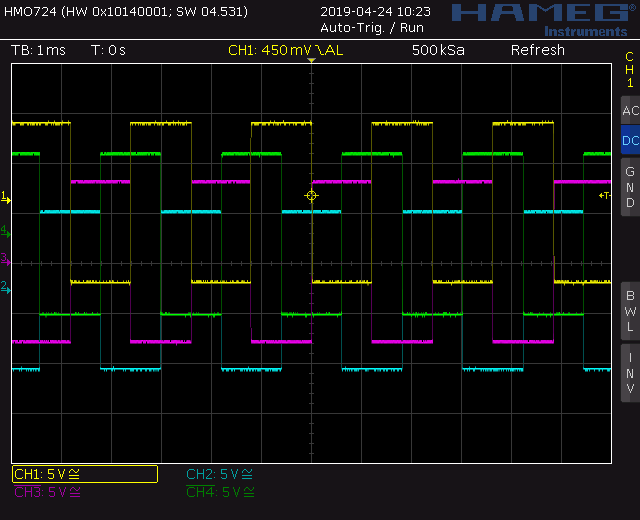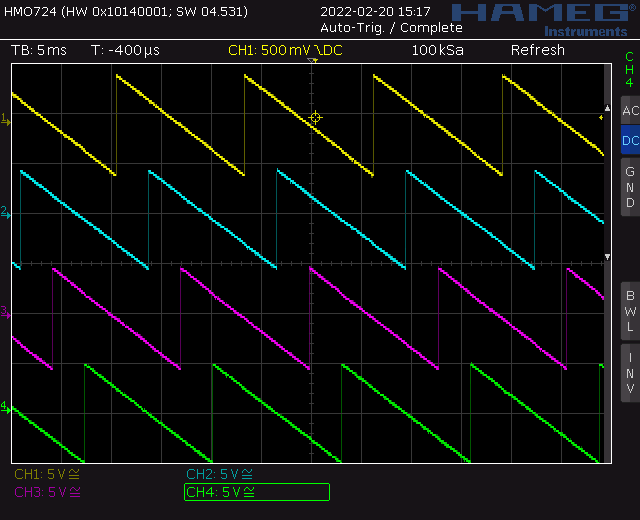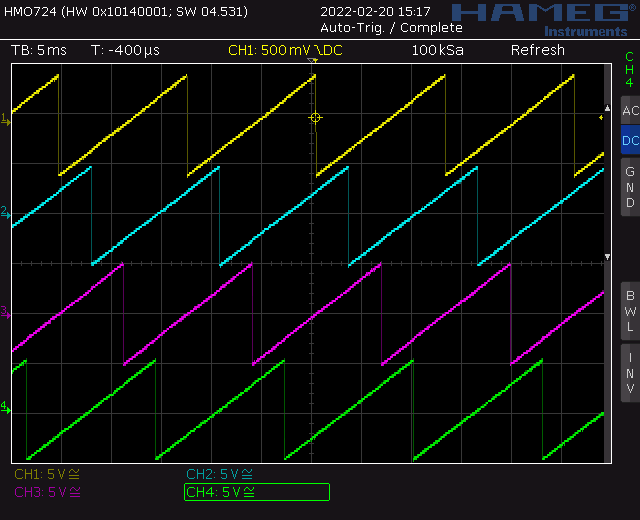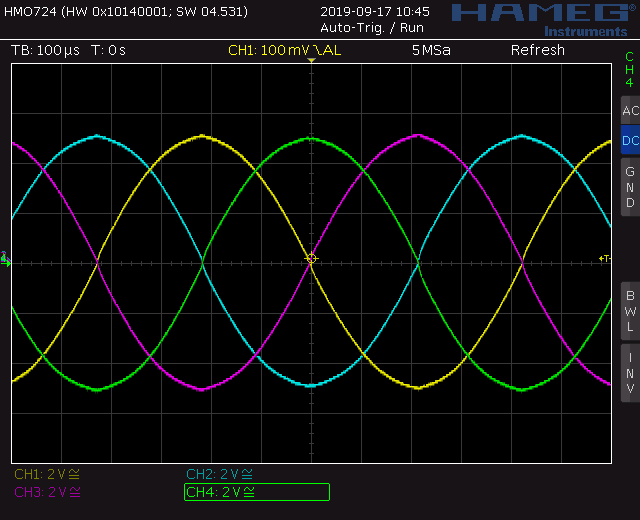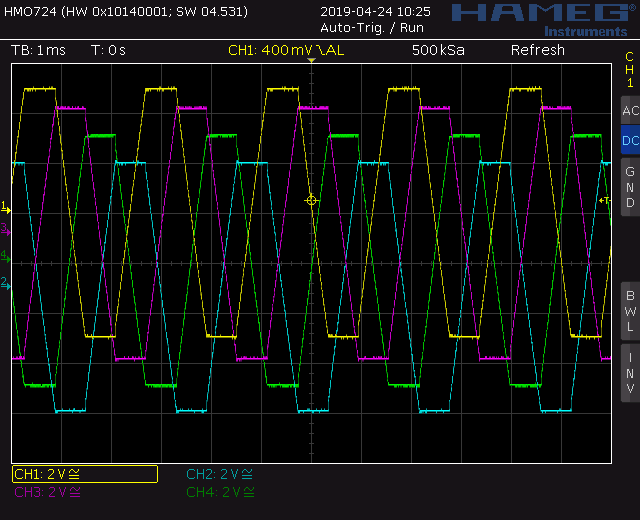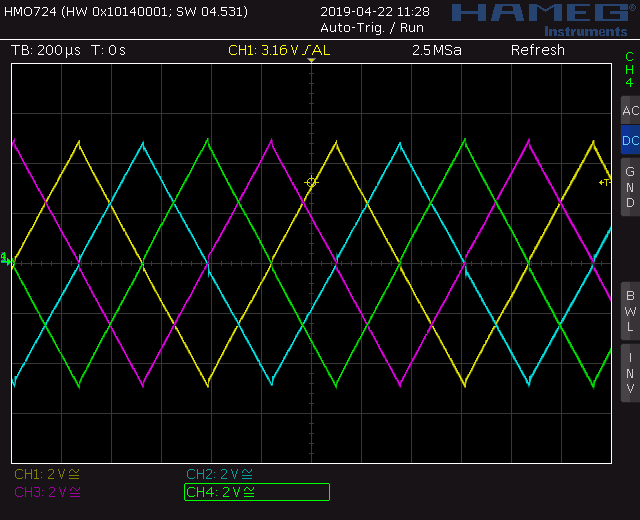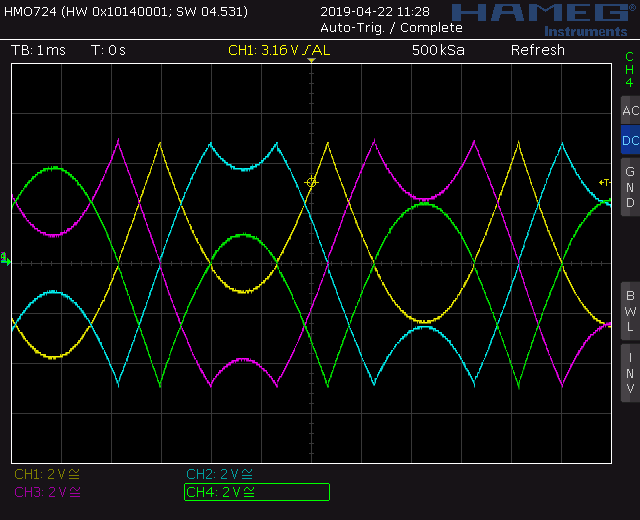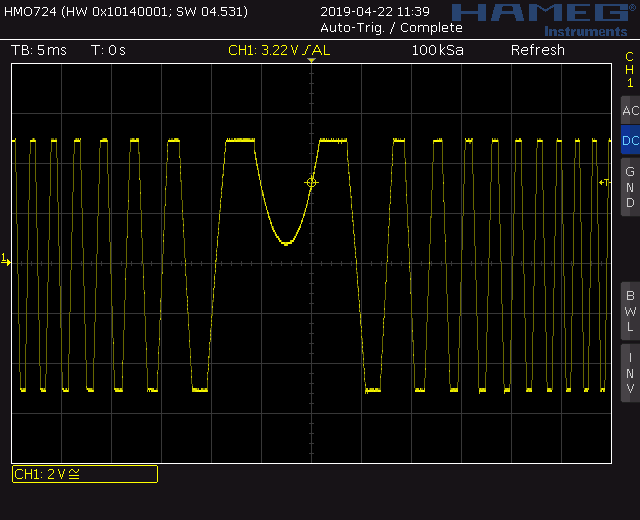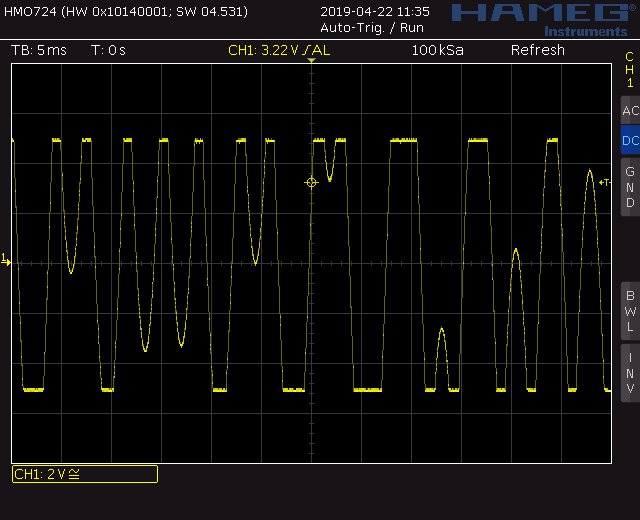I am kind of tiered to keep this blog alive and updated. I will still post on my website and on ModWiggler. So for new modules you have to go to my website from now on. Keep soldering,
Author Archives: Harald
Active Slider Bank (command one)
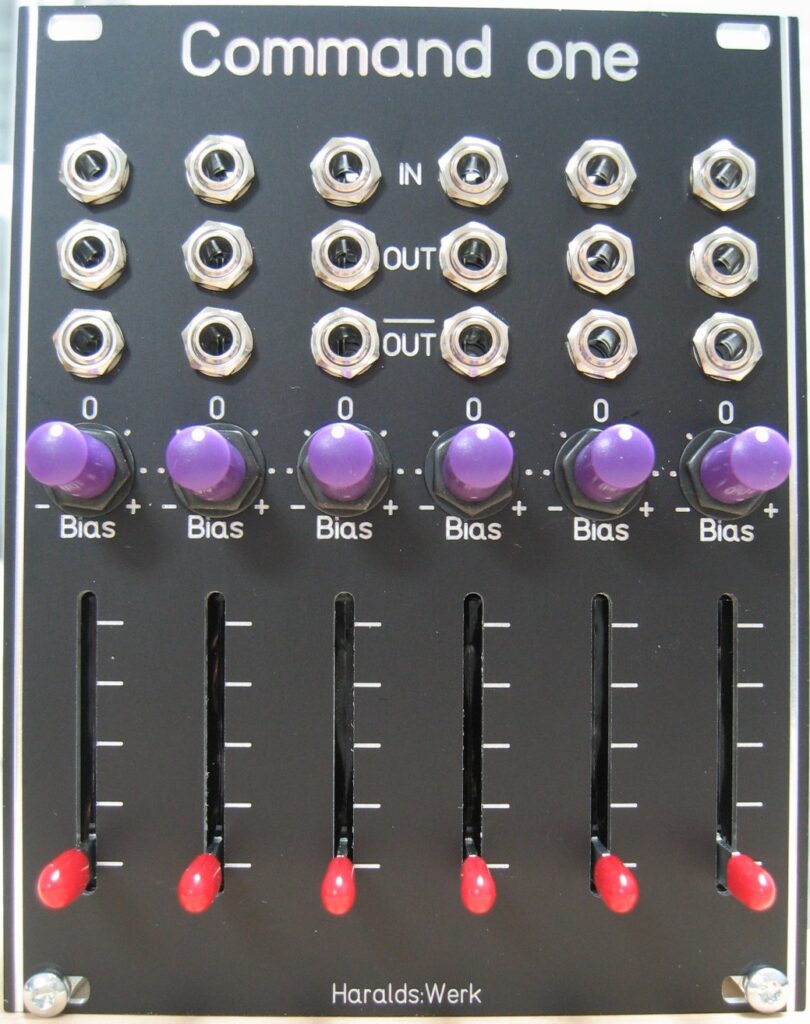
This utility module gives you a wide range of variable and adjustable control voltages from -10V to +10V. This only depends on the knob and slider setting and patching within itself. If used with external input it can attenuate and offset the incoming signal. I use this module for steering modules which lacks of attenuator at the inputs or in greater patches for applying control voltages to far away modules. It is quite comfortable to have the controls in the first row of your case and not somewhere in the messy patch hardly in reach for your hands
Specs and features
- Variable and adjustable control voltages from -10V to +10V
- Six independent active attenuator with external signals
- Positive and negative offset for external signals
- Runs on +/-12V and +/-15V
- Power consumption below 20mA each rail
The documentation and the Gerber files for download can be found in my website.
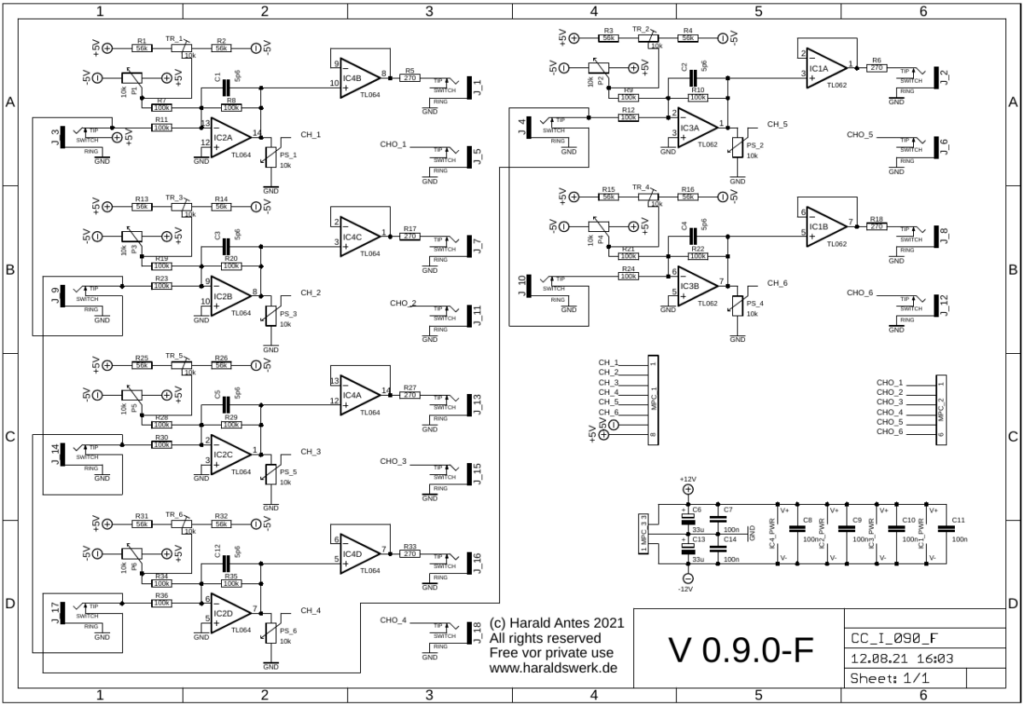
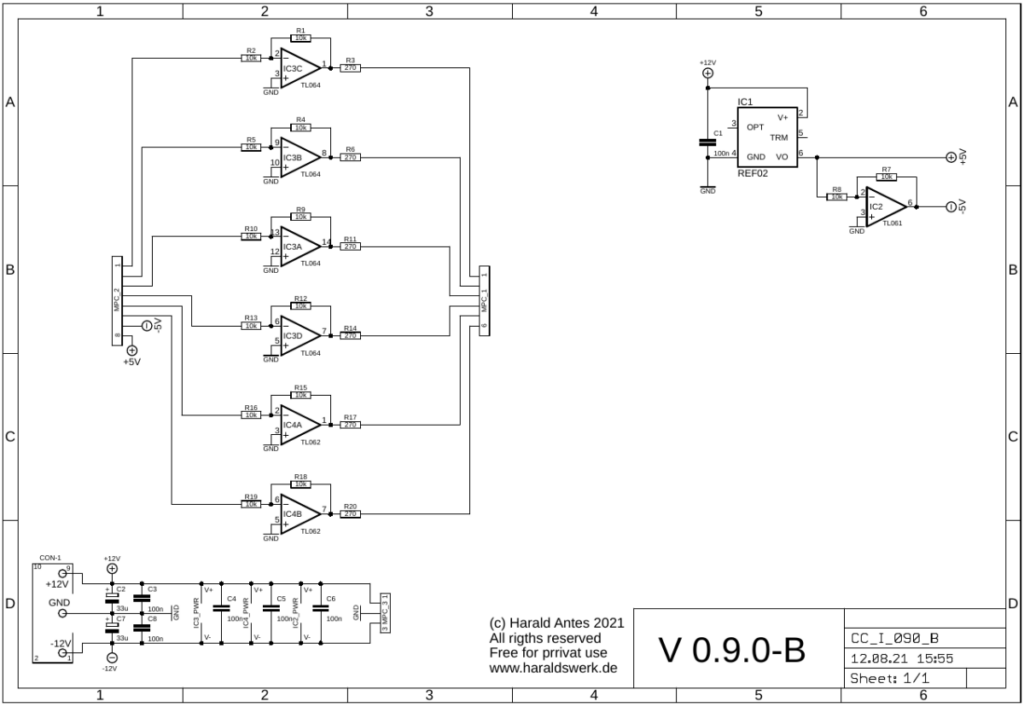
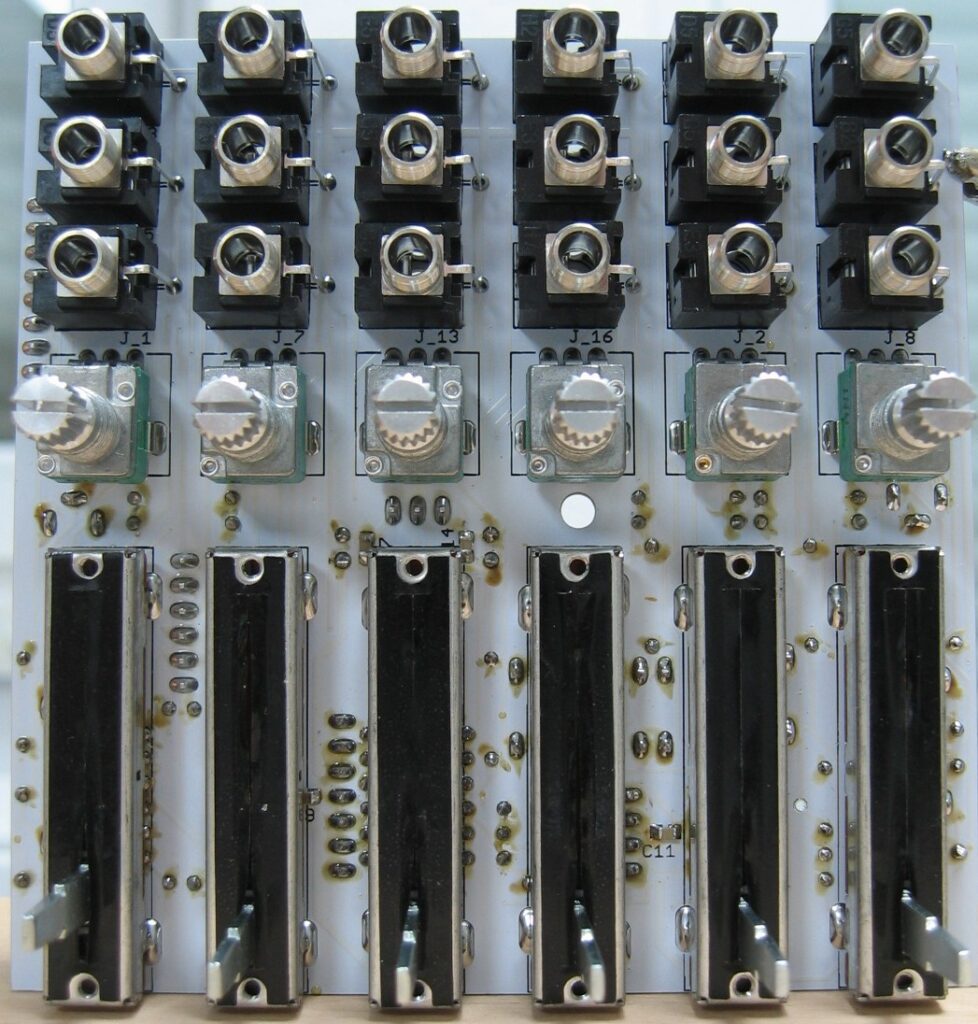
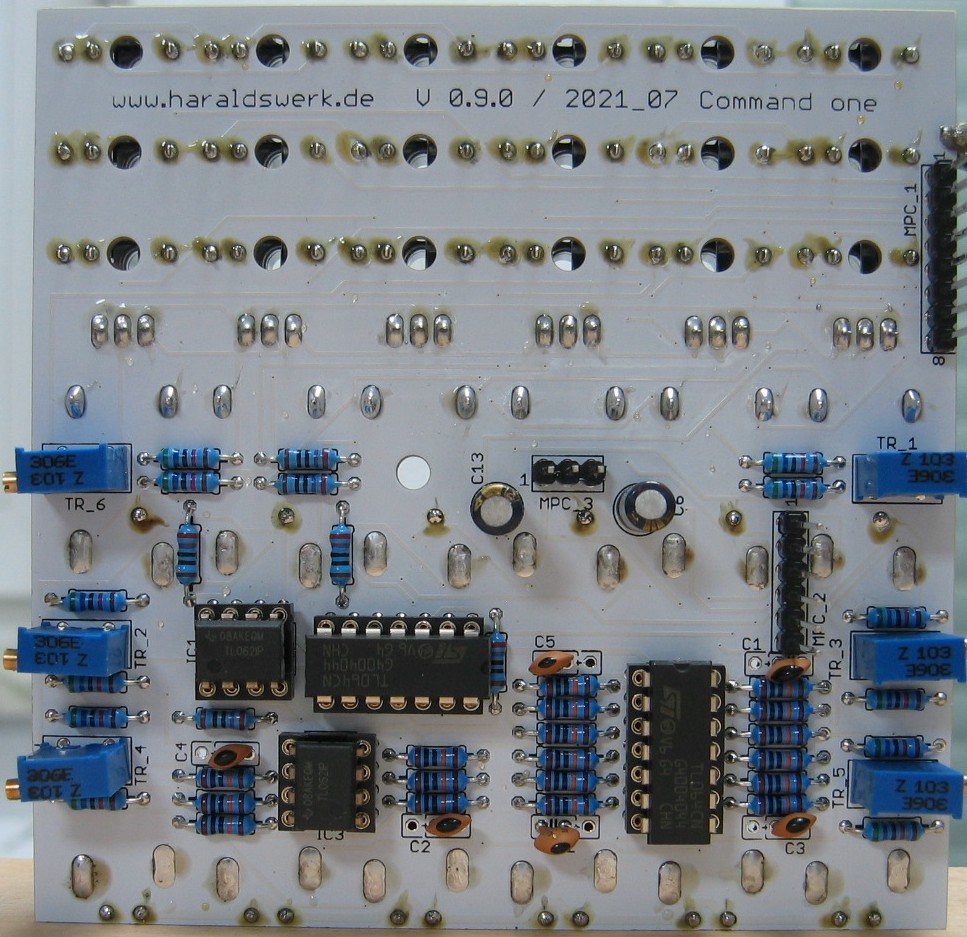
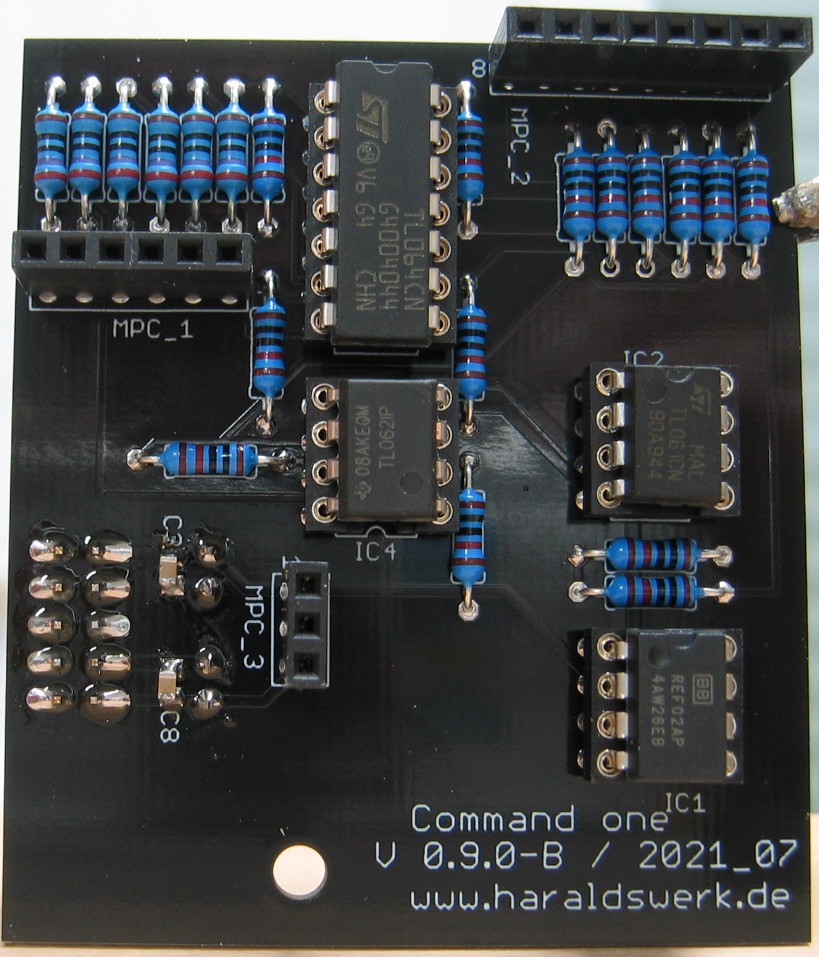
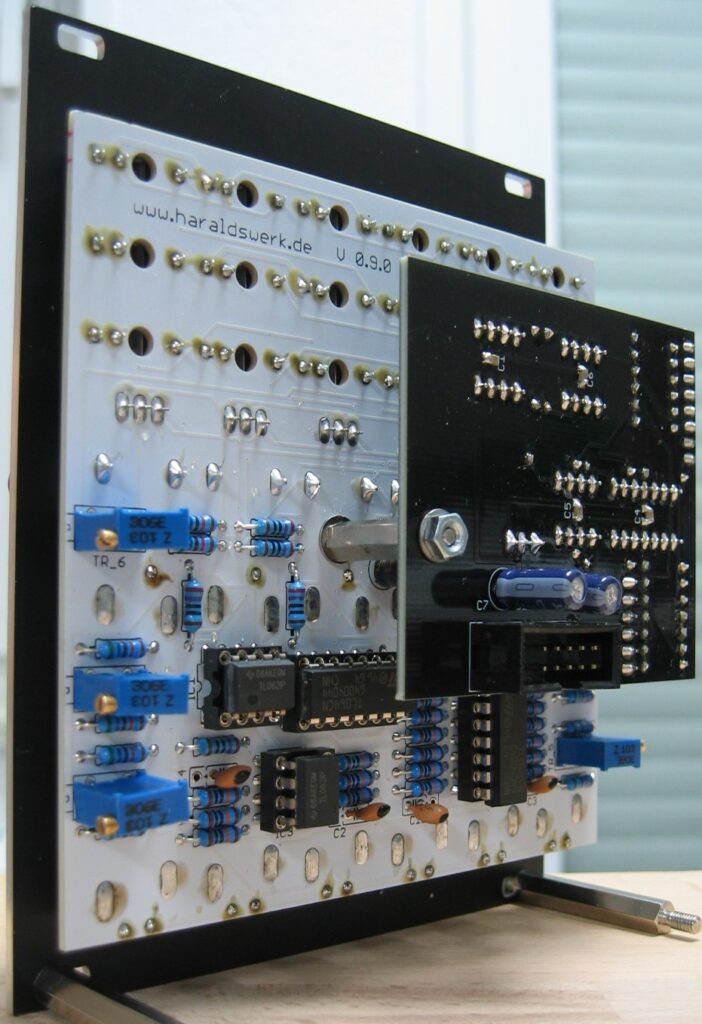
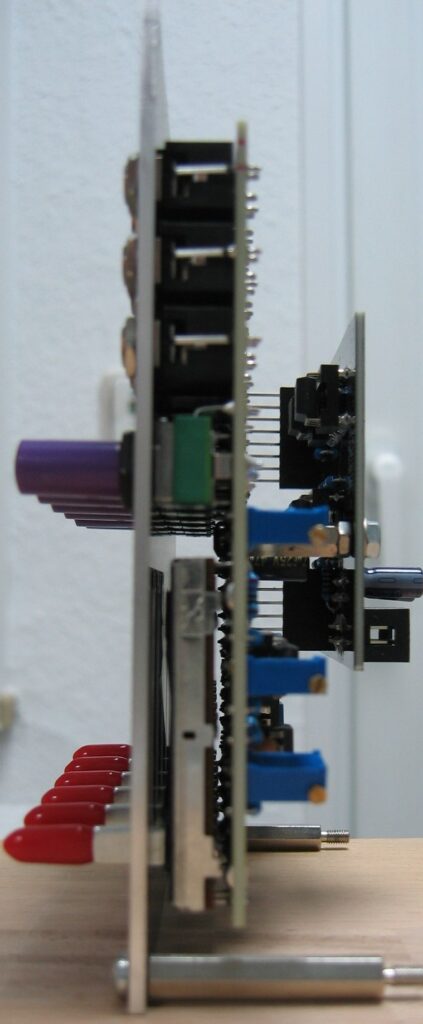
Logic II (AND, OR, XOR, NOT)

This logic module takes up to four input signals and outputs the logic function AND, OR, XOR dependent on the input signals. The inputs are normalized so you can use less then the four inputs. It has three NOT functions as well.
Specs and features
- Up to four input signals
- AND, OR, XOR parallel out
- Three NOT functions
- Runs on +/-12V and +/-15V
- Power consumption below 30mA positive rail. 5mA negative rail.
The documentation and the Gerber files for download can be found in my website.
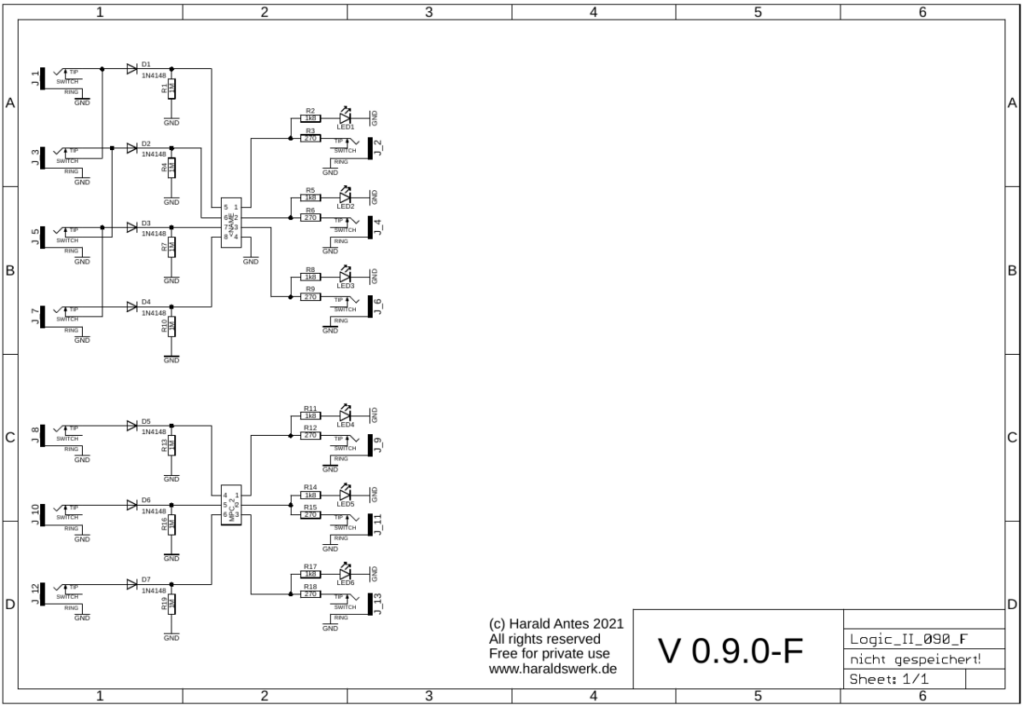
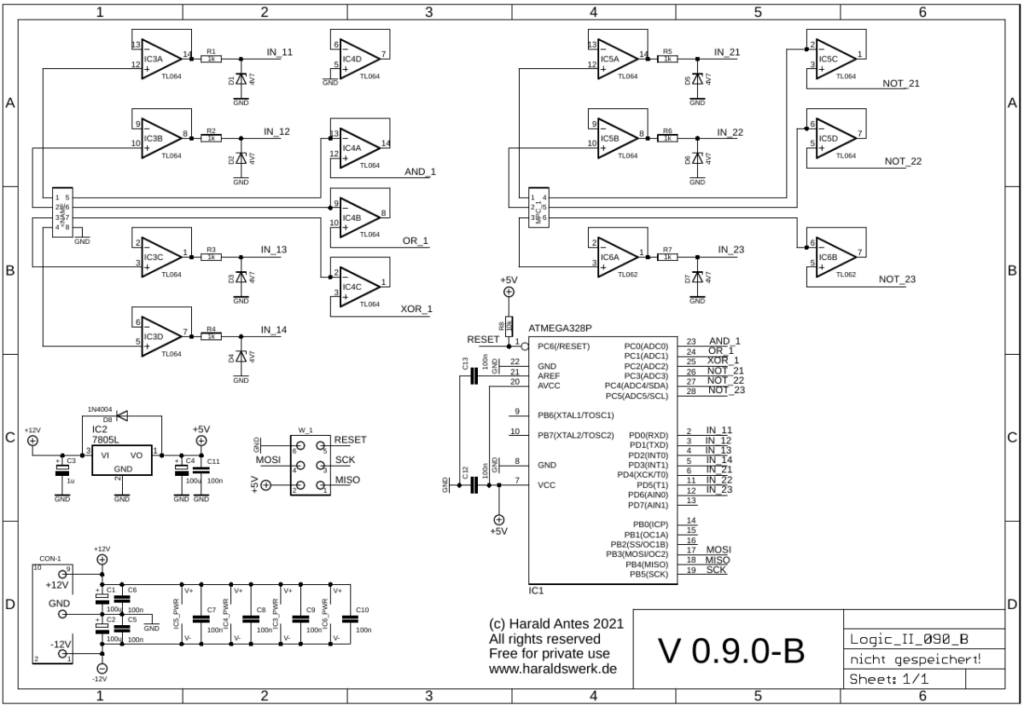
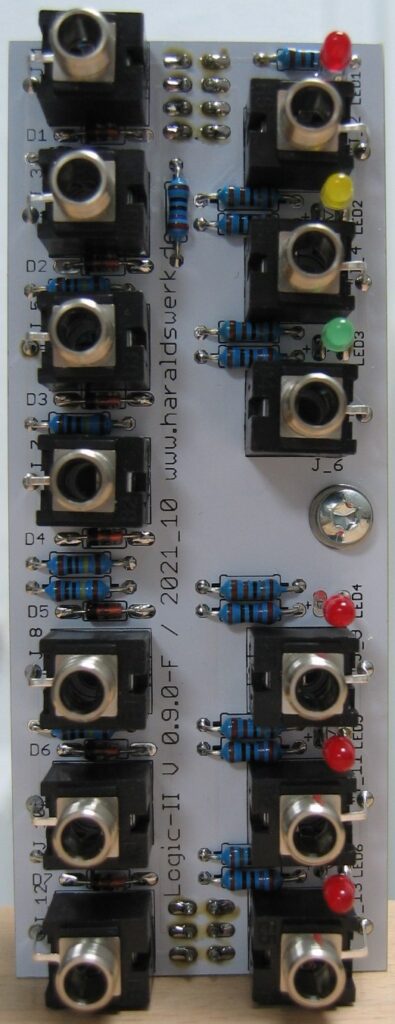
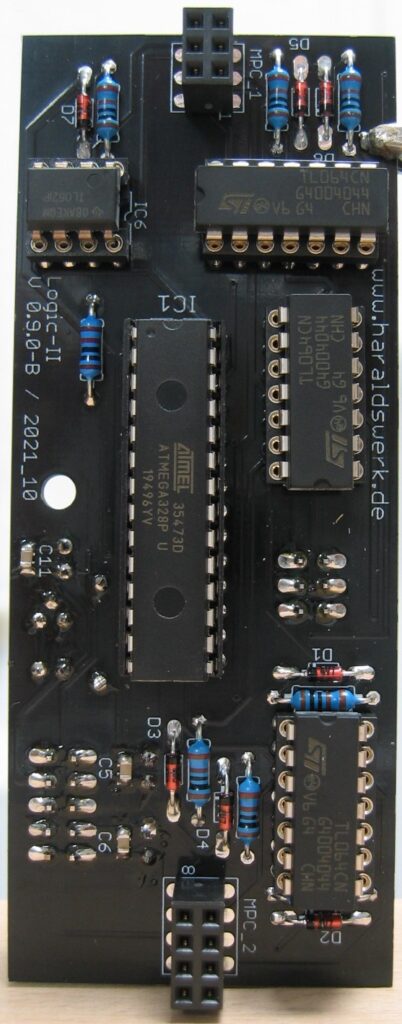
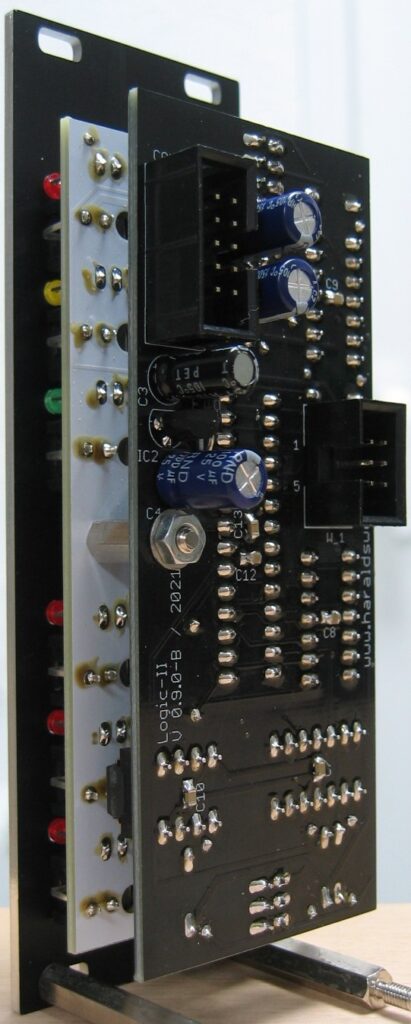
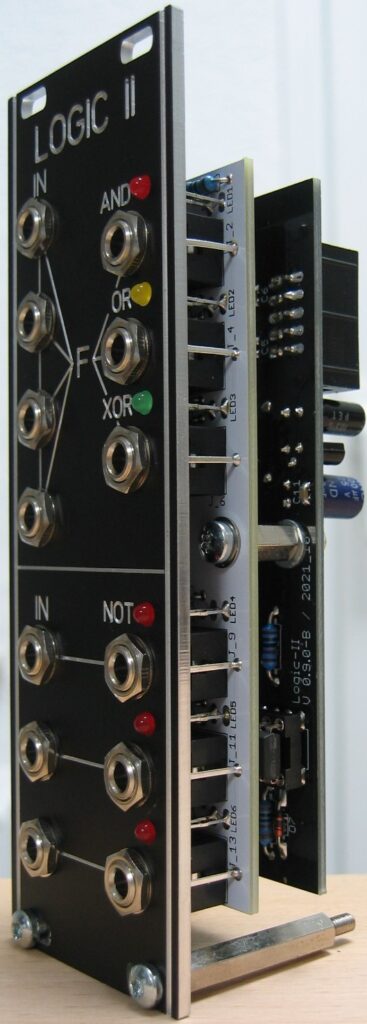

Active Attenuator / Amplifier 0–N

While working with modulars I have had some modules lacking input attenuator or output volume. To cure that I have build this module. It is usable as active attenuator and / or amplifier. The attenuation or amplification is determined by one resistor per channel, so you can easily adjust the attenuation or amplification to your needs.
Specs and features
- Three independent active attenuator or amplifier
- Attenuation / amplification adjusted with one resistor.
- Runs on +/-12V and +/-15V
- Power consumption below 20mA each rail
The documentation and the Gerber files for download can be found in my website.
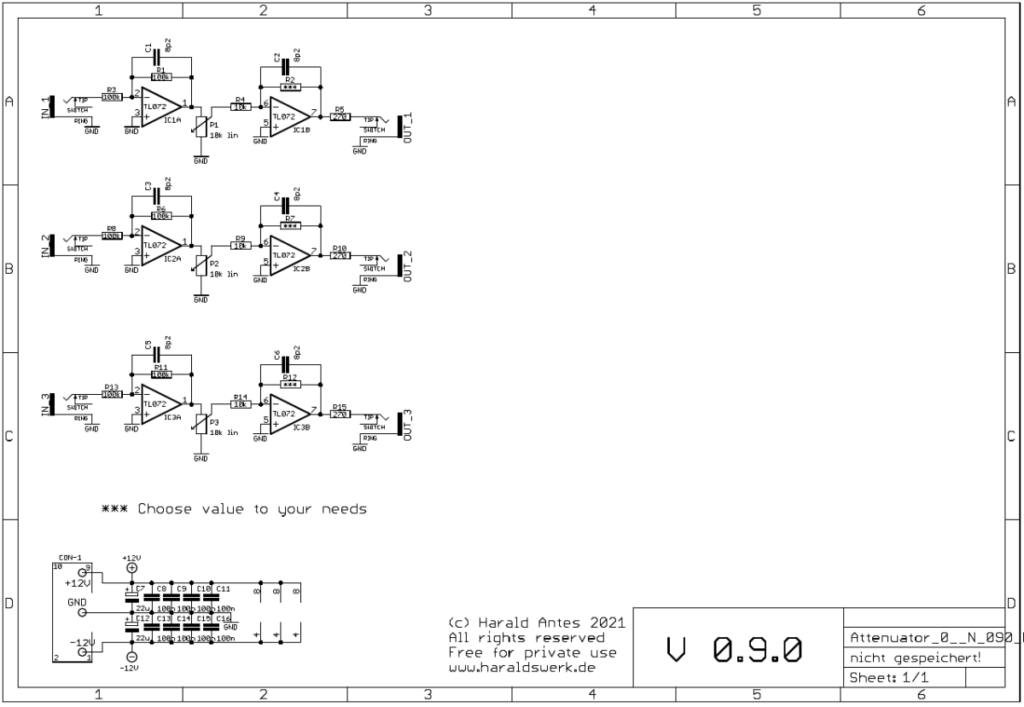
The attenuation or amplification is determined by one resistor per Channel (R2, R7, R12)


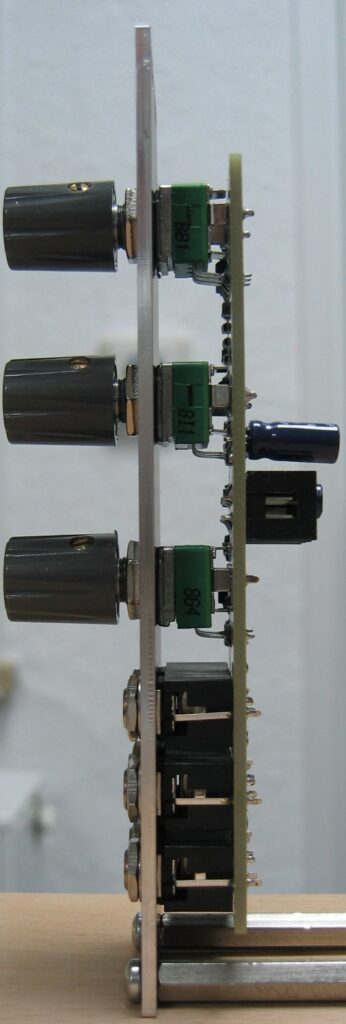
Logic I

This logic module takes up to four input signals and outputs the logic function AND, OR, XOR dependent on the input signals. The inputs are normalized so you can use less then the four inputs.
Specs and features
- Up to four input signals
- AND, OR, XOR parallel out
- Runs on +/-12V and +/-15V
- Power consumption below 30mA positive rail. 5mA negative rail.
The documentation and the Gerber files for download can be found in my website.
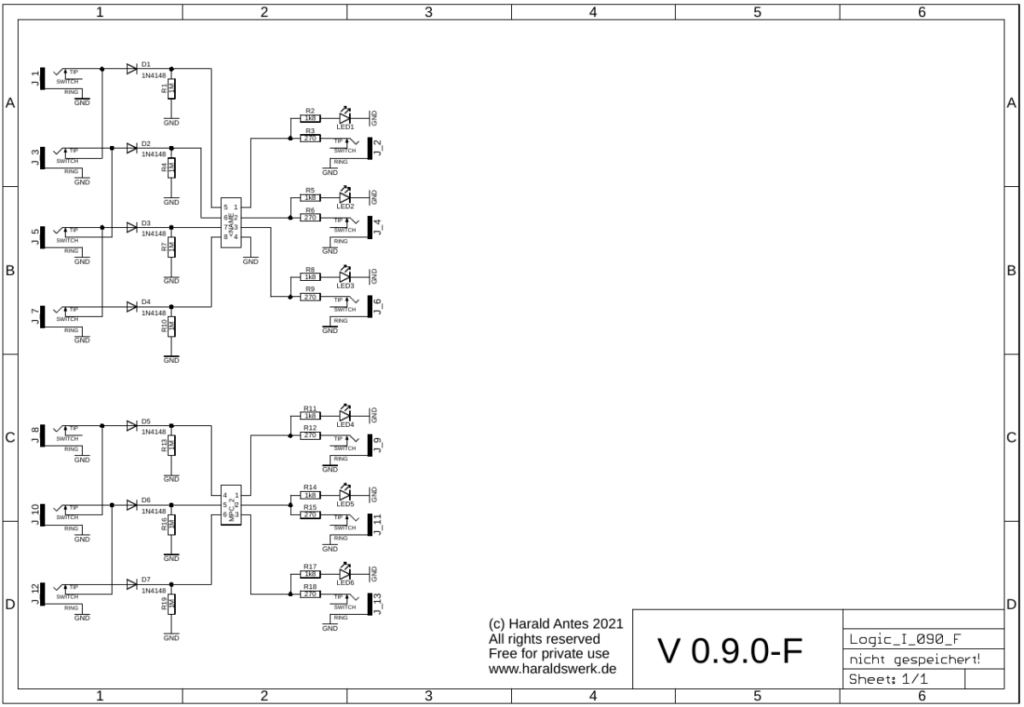
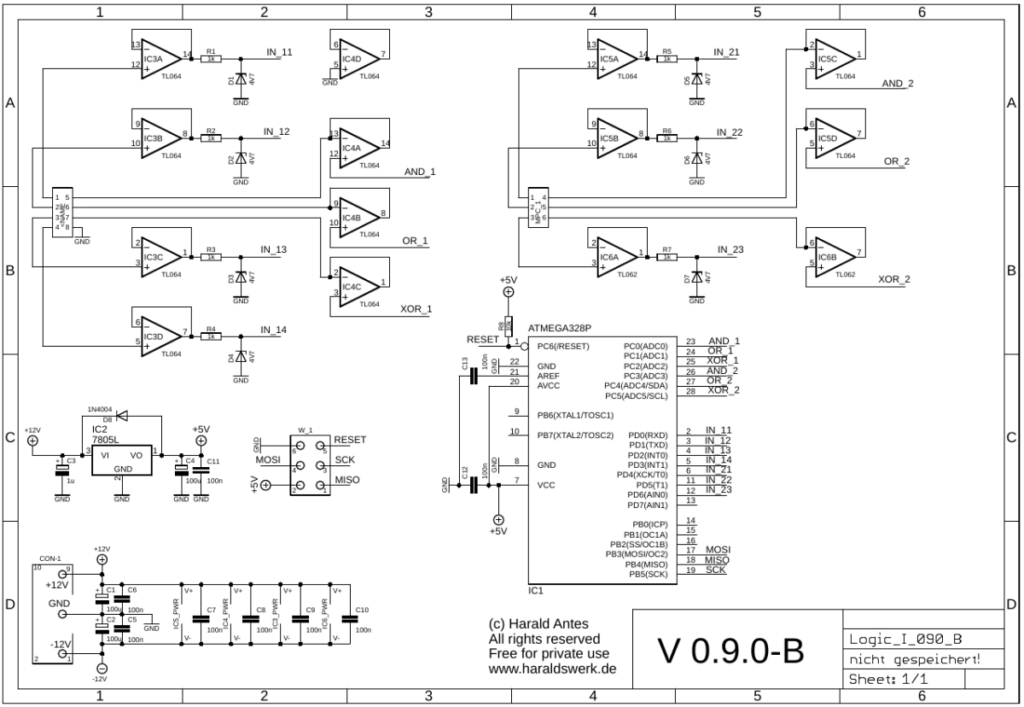
Nothing special to mention. On page one you see the input and outputs. On page two are the input protection circuitry, the microprocessor and the output buffers. The logic is done in software.
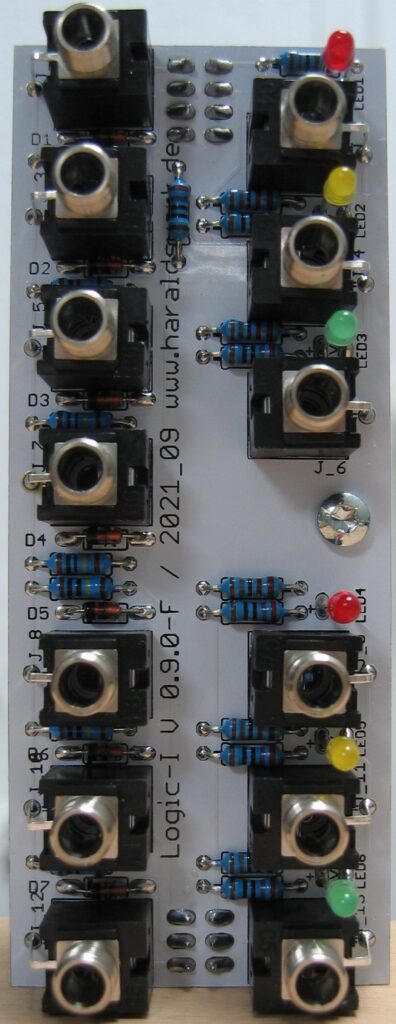
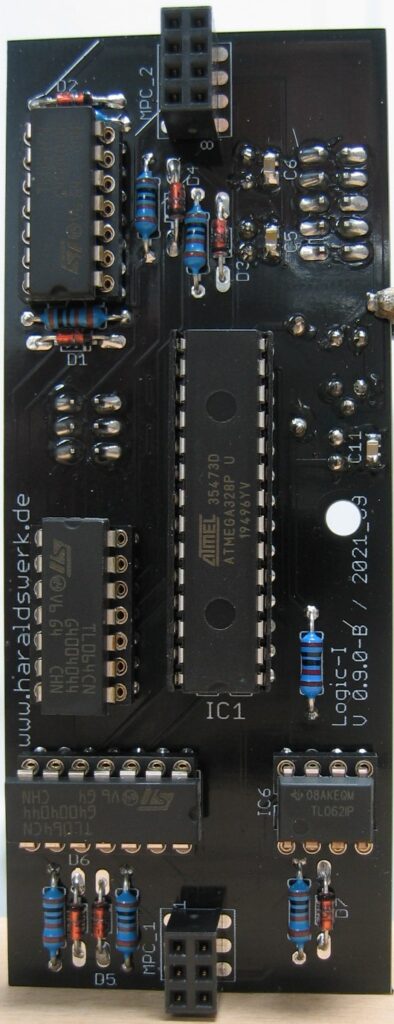
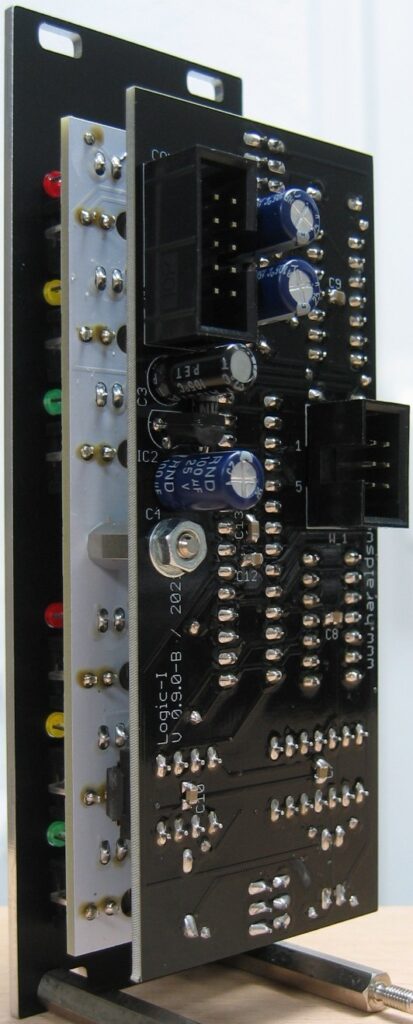

Quad Ringmodulator
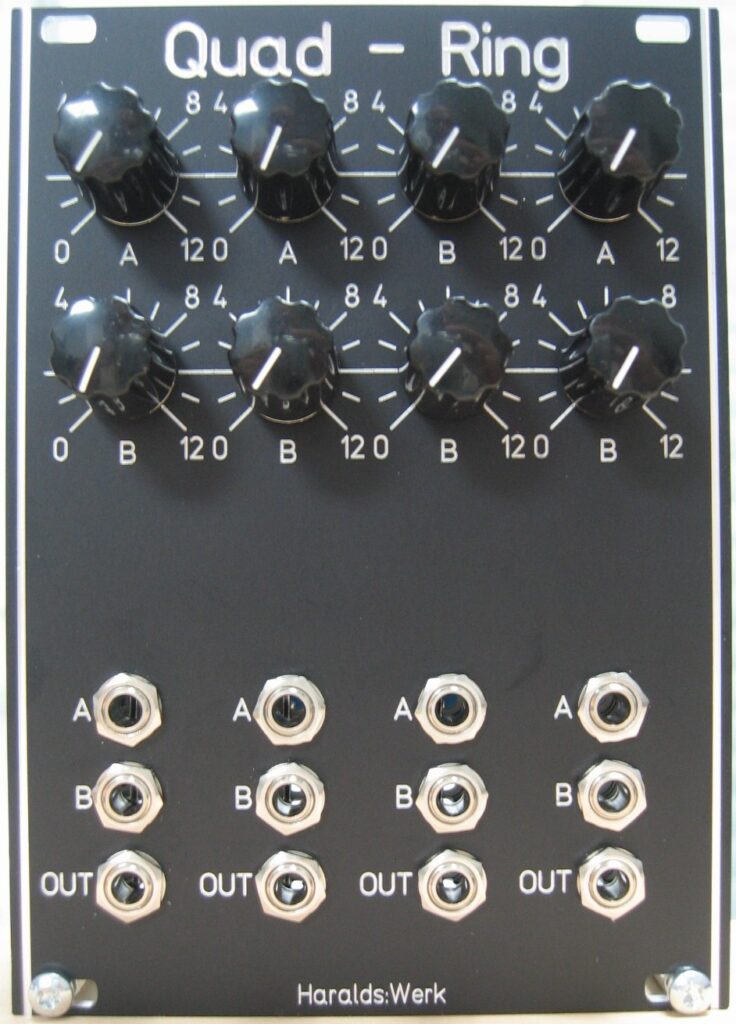
This is the 12V Euro version of my NGF dual version. It uses the now obsolete LM1496 balanced modulator -demodulator. But you can still source them and I have some in my stock. So I decided to make a PCB and module. I started with the original Elektor Formant schematic published in “Formant Erweiterungen” p35ff. I left out the microphone and envelope follower part because I already have such modules. I have added input buffers and raised the signal level to my 10Vpp used throughout my system.
Specs and features
- Quad Ringmodulator
- 10Vpp input and output
- Runs on +/-12V and +/-15V
- Power consumption around 70mA each rail
The documentation and the Gerber files for download can be found in my website.
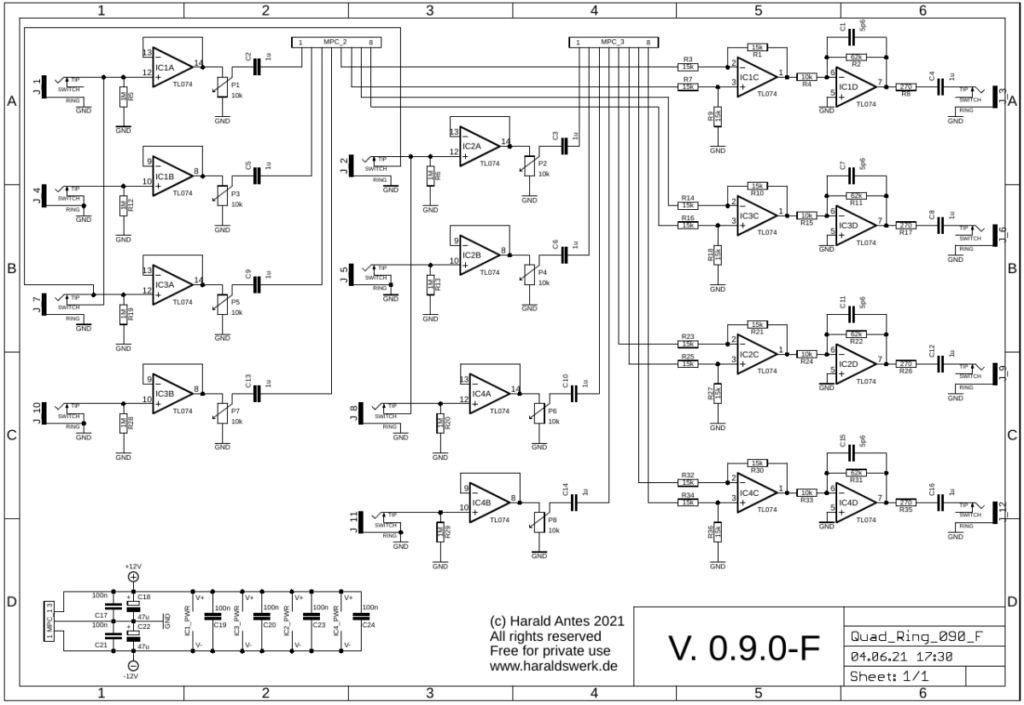
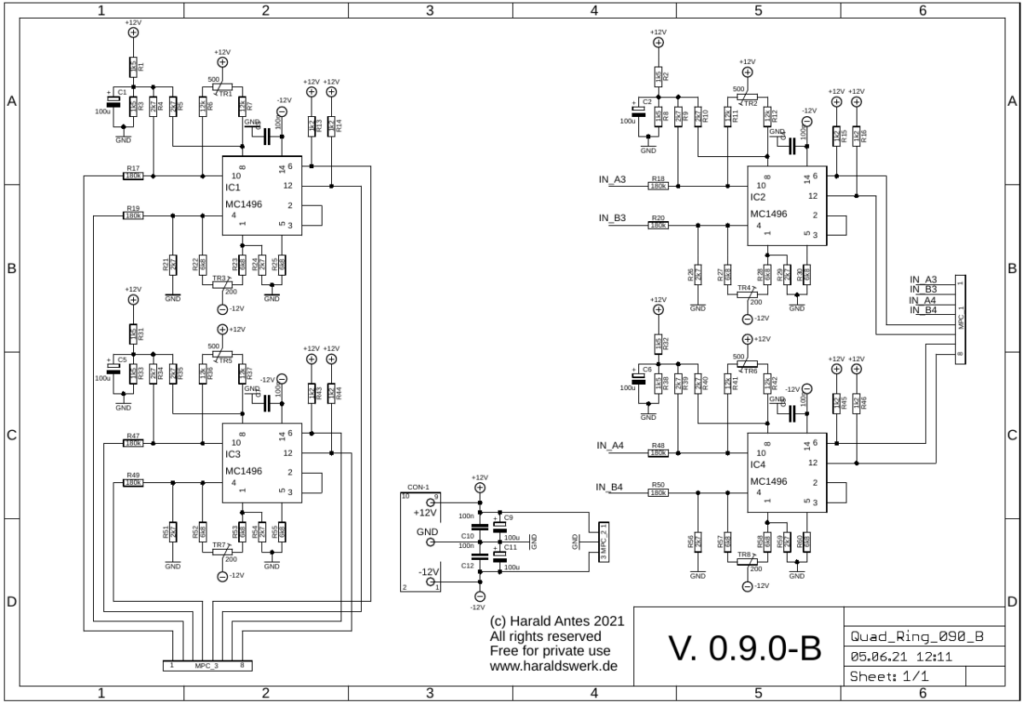
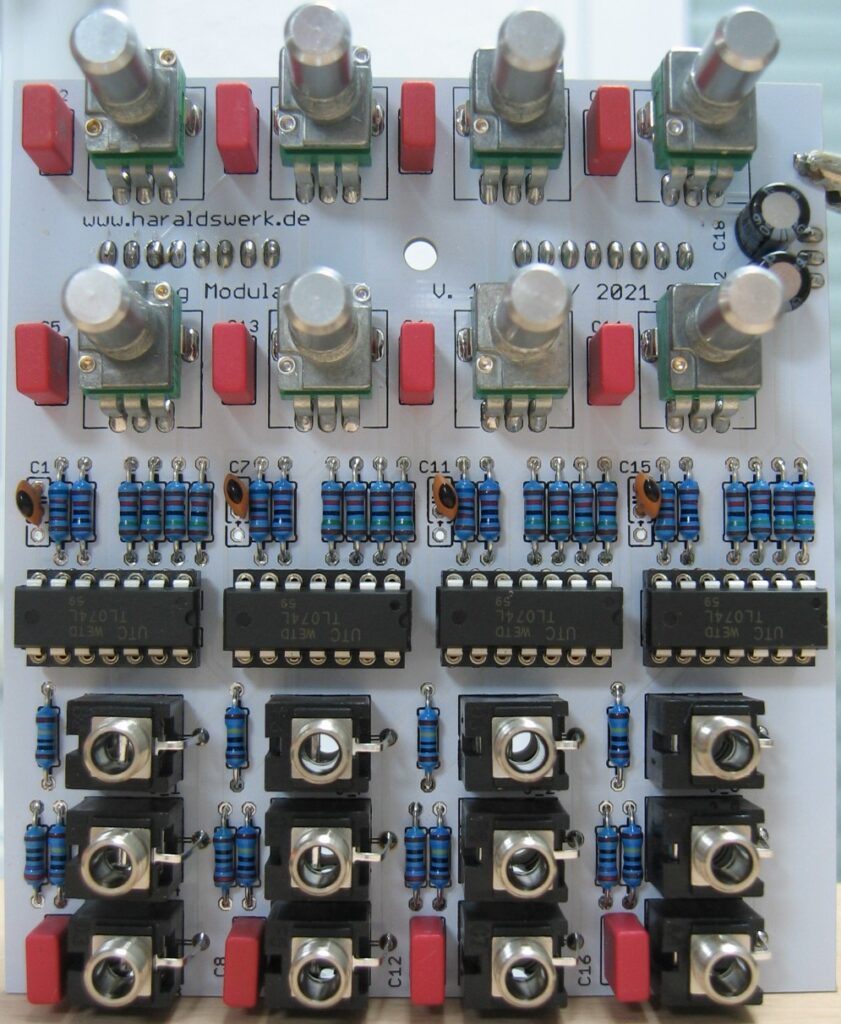
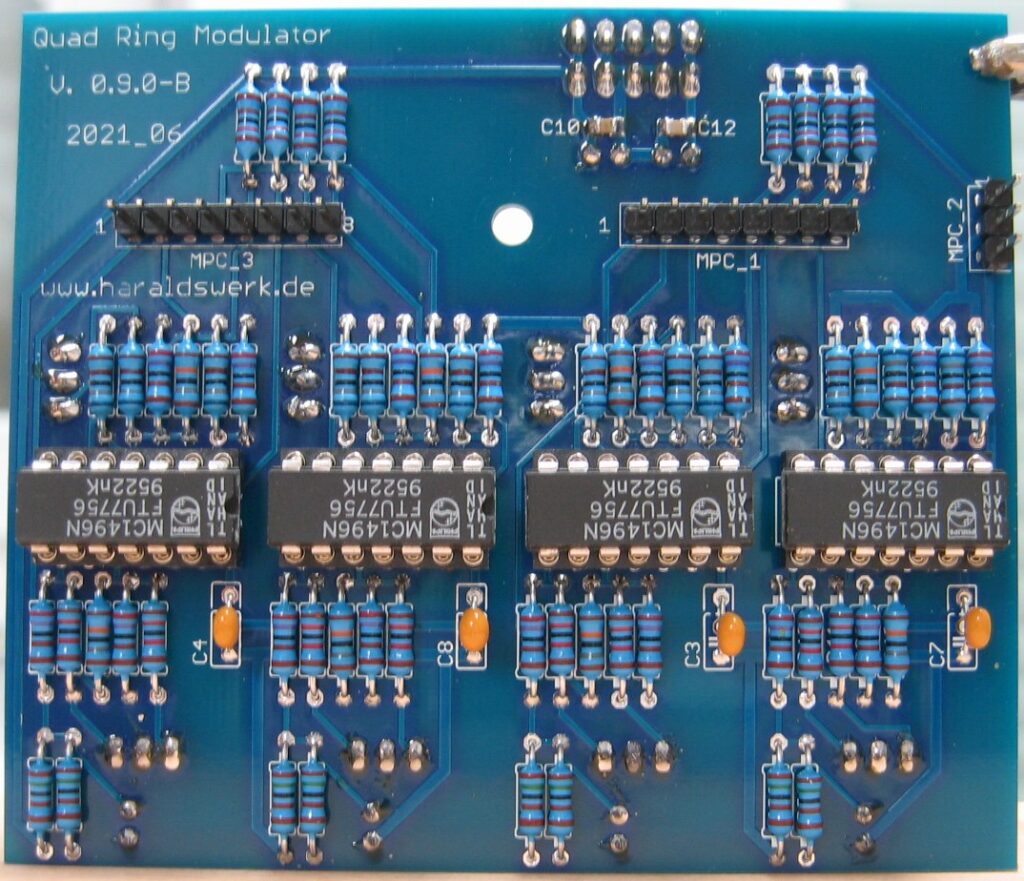
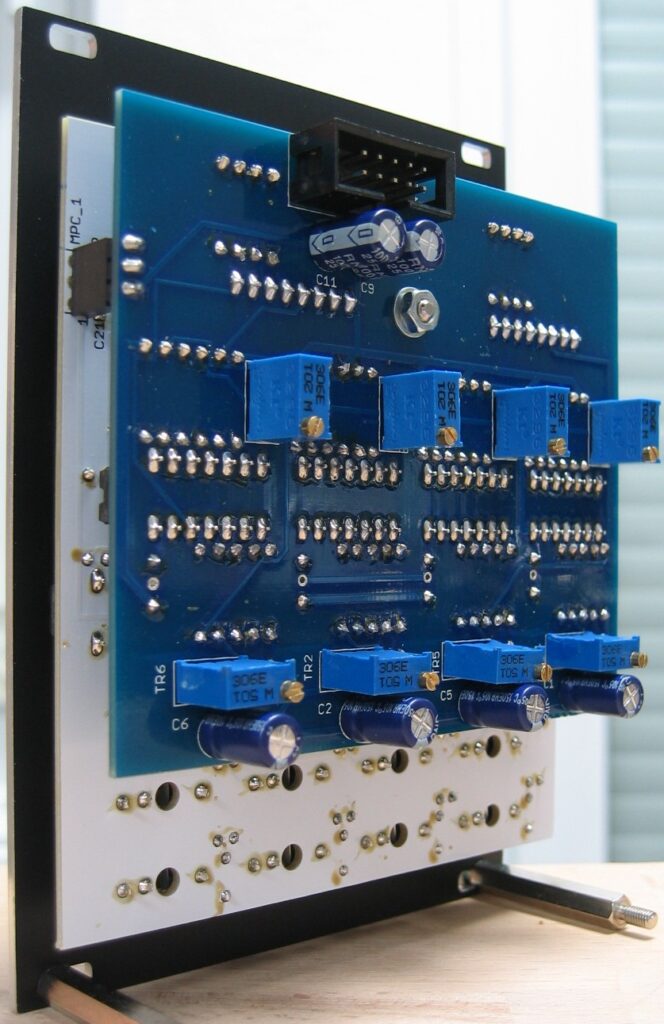
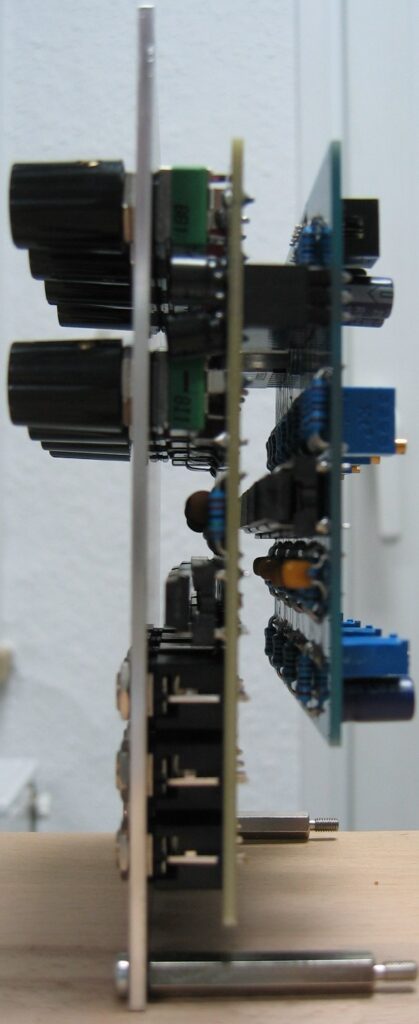
Steiner Parker VCF

This is my take on the Steiner Parker filter. It is based an article in Electronic Design 25, December 6. 1974. You can find various implementations on the net. Very interesting are those from YuSynth and Ken Stone. You can still find them on the web as well as the original article. With my input stage it is possible to use the three filter inputs LP, HP, BP in parallel. The LP input is normalized to the others, so only one patch cable is needed. All inputs have attenuator.
Specs and features
- Low pass, high pass, band pass input with attenuator
- Positive and negative ENV control with sign changer
- CV inputs for linear TM, log TM, envelope, V/Oct tracking and emphasis
- Runs on +/-12V and +/-15V (with minor resistor value changes for best performance)
- Power consumption below 20mA each rail
The documentation and the Gerber files for download can be found in my website.
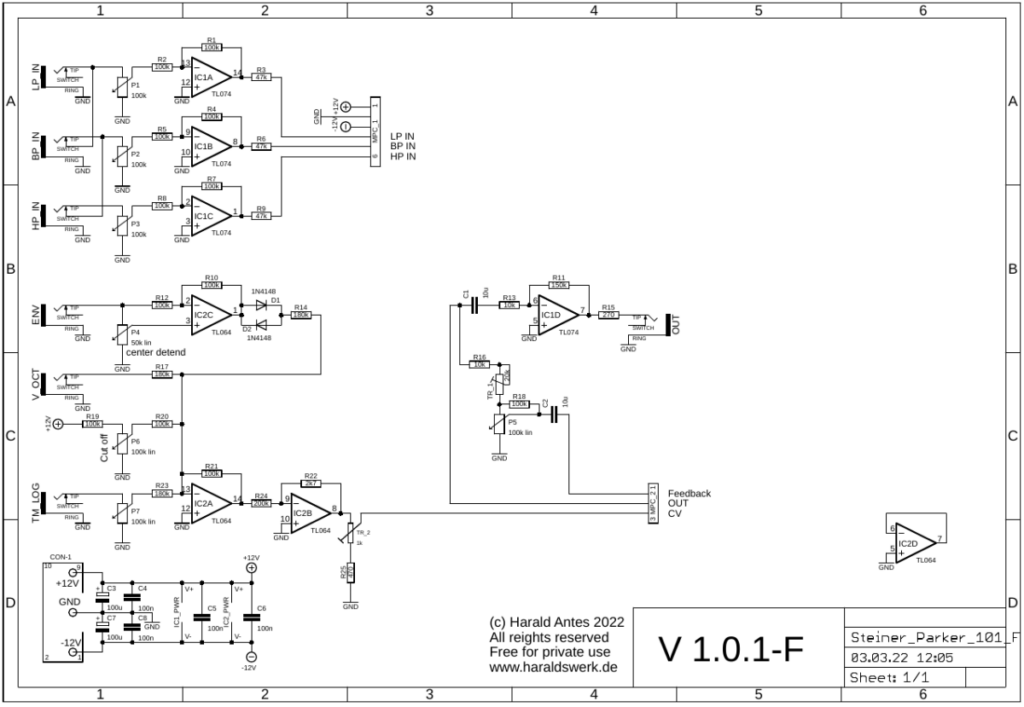
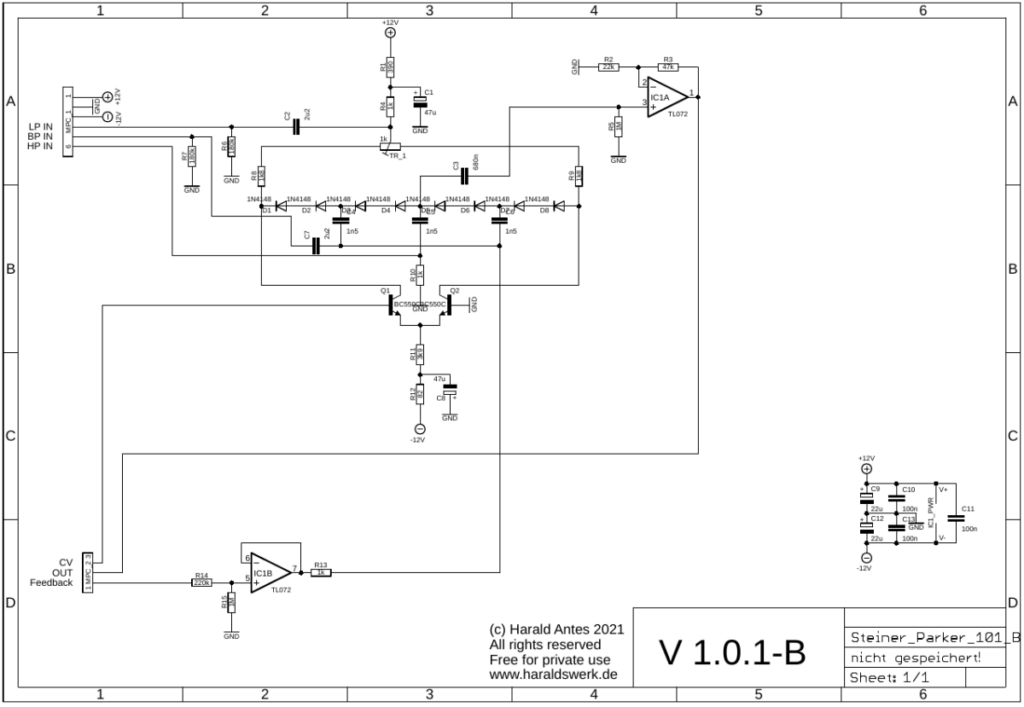
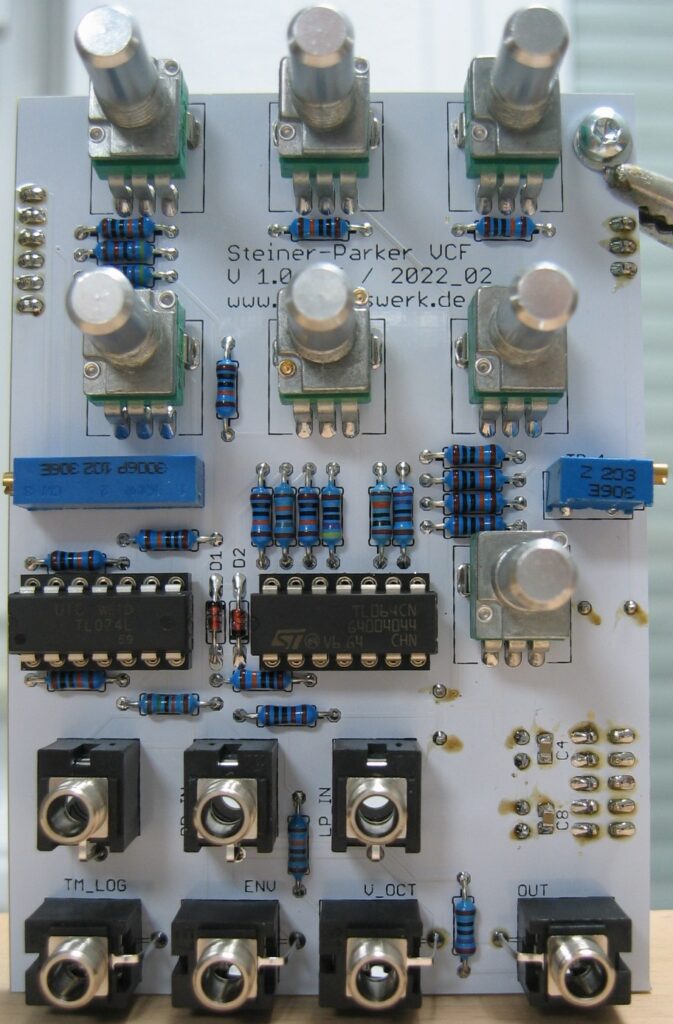
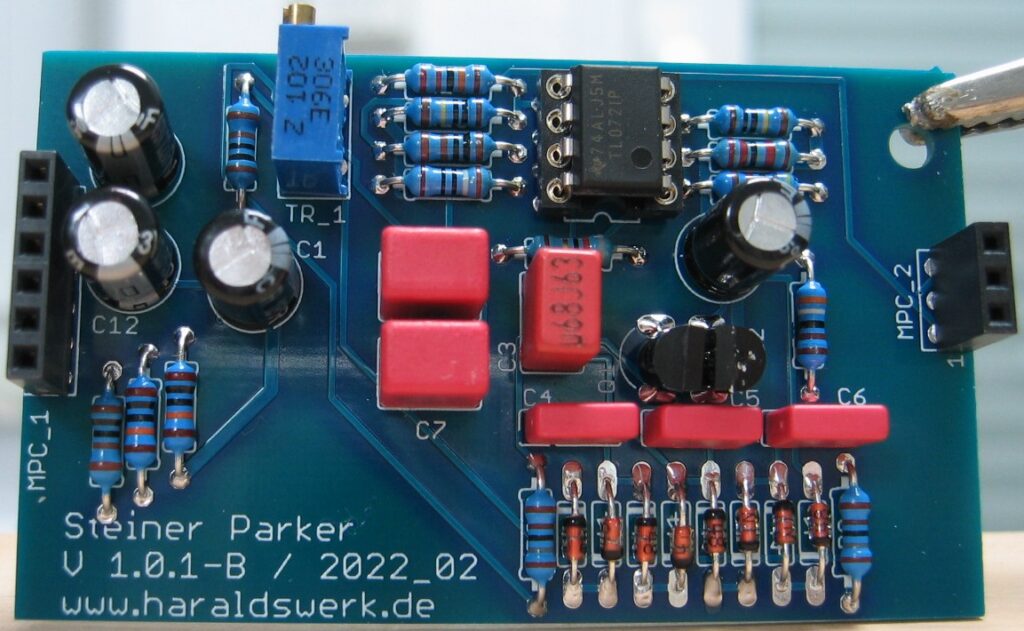
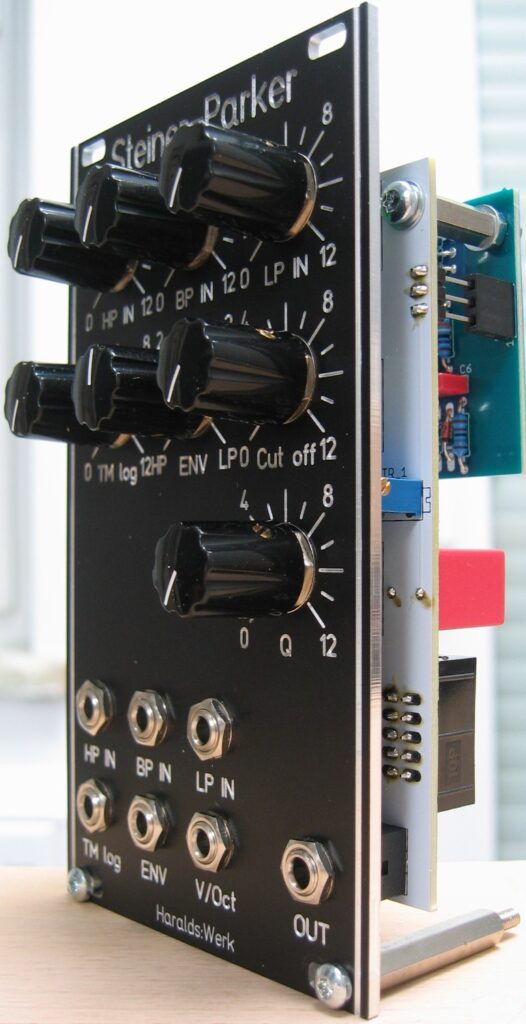
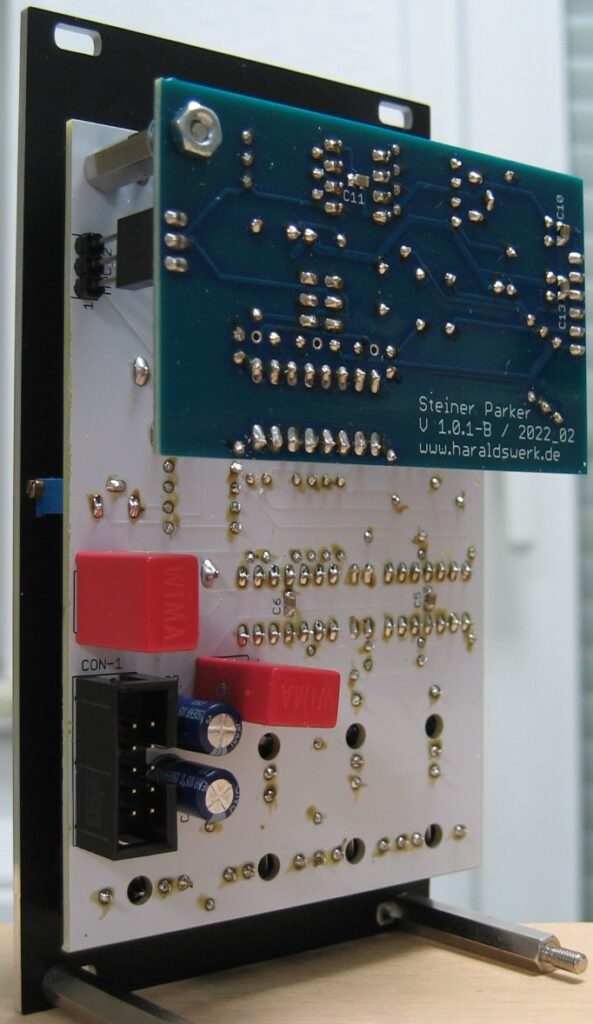
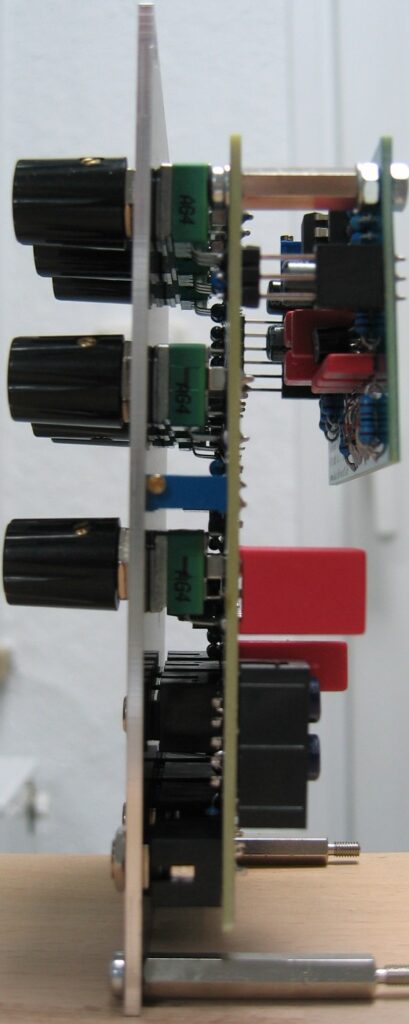
Stereo Mixer

This is a 3 in 1 stereo mixer with normalized left to right inputs. The module is DC-coupled and can be used for audio and control voltage mixing.
Specs and features
- 3 in 1 Stereo mixer
- Left input normalized to right input
- DC coupled
- Power consumption below 20mA each rail
The documentation and the Gerber files for download can be found in my website.
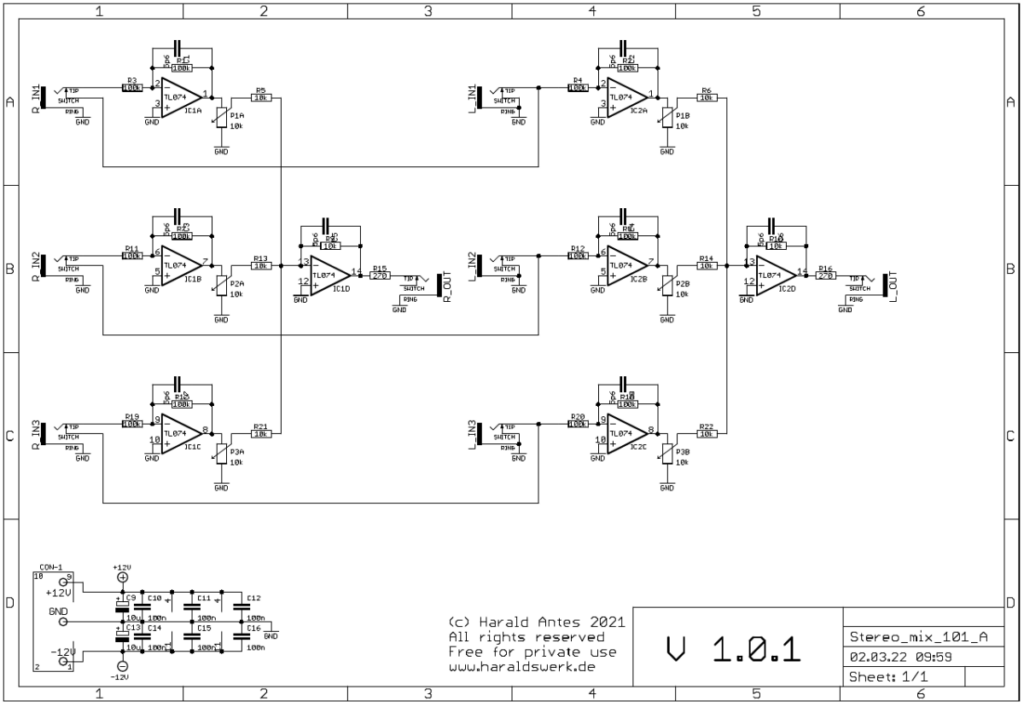
Nothing special here. Simple, straight forward mixer design.
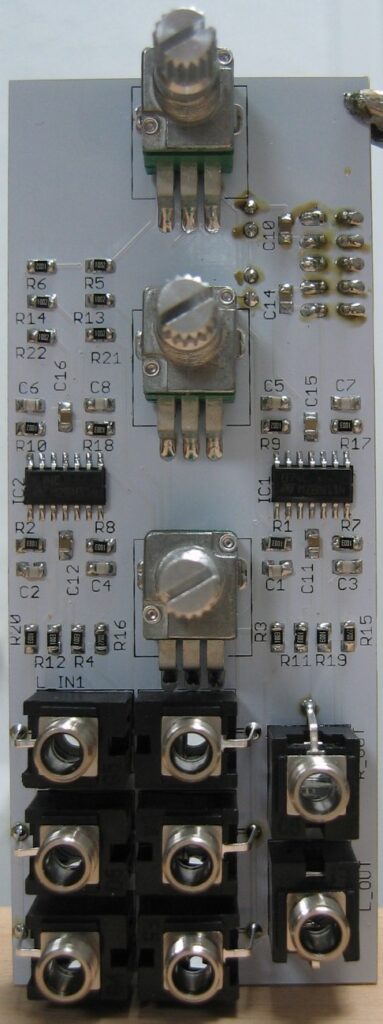
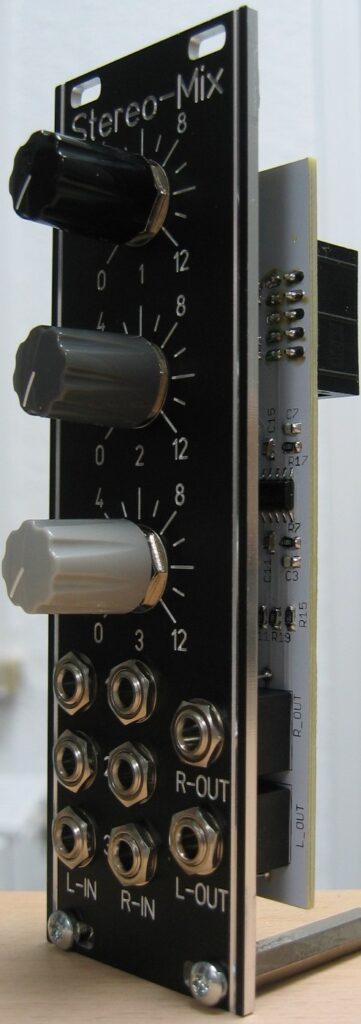


Headphone Amplifier

Not that much to say here. Simply a Headphone Amplifier. Based on Douglas Self “Small Signal Audio Design” second edition pg.560 and pg.33 fig.1.12
Simple dual amplifier with opamp-array (multipath amplifier).
Specs and features
- Drives headphones in the range from 50R to 600R
- Runs on +/-15V and +/-12V
- Power consumption around 25mA each rail
The documentation and the Gerber files for download can be found in my website.
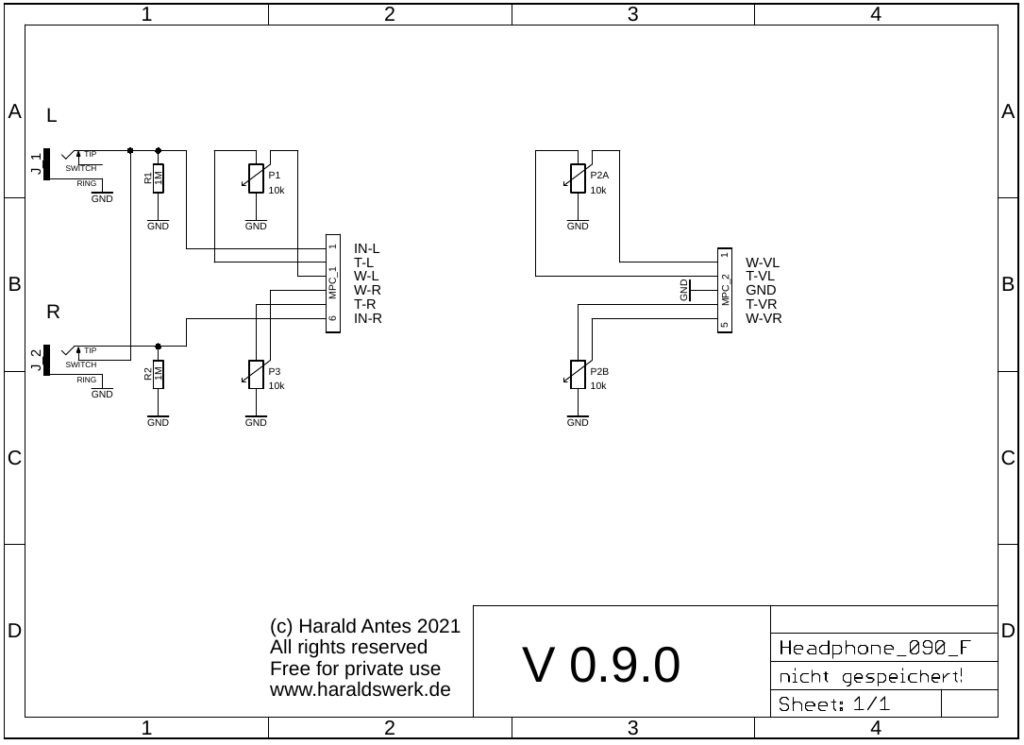
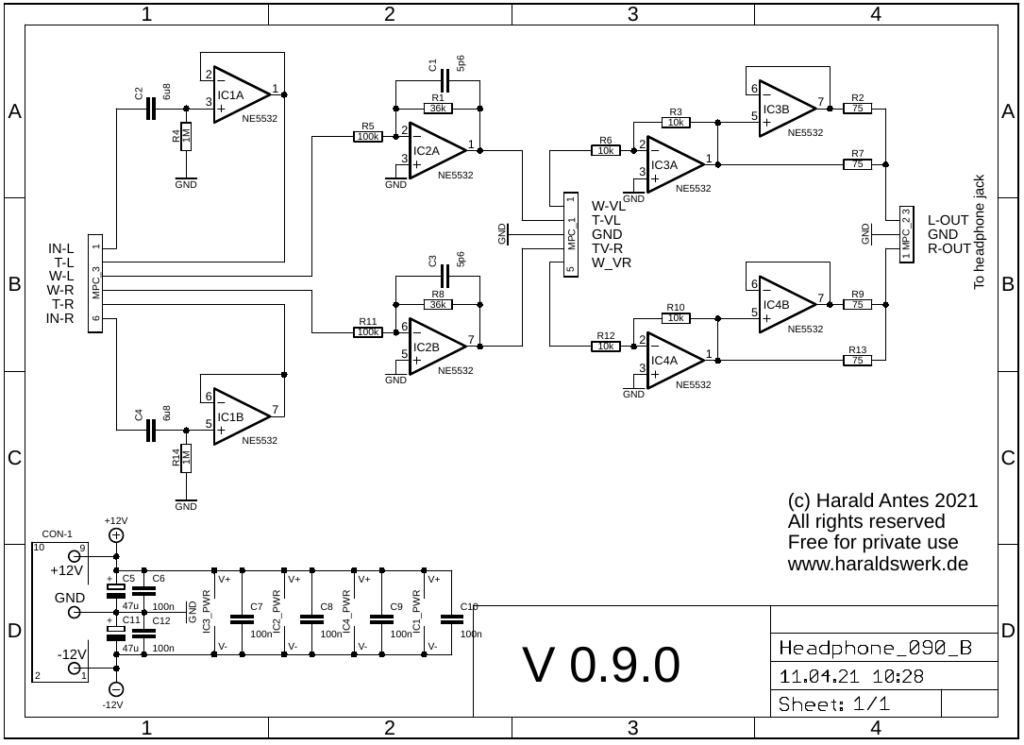
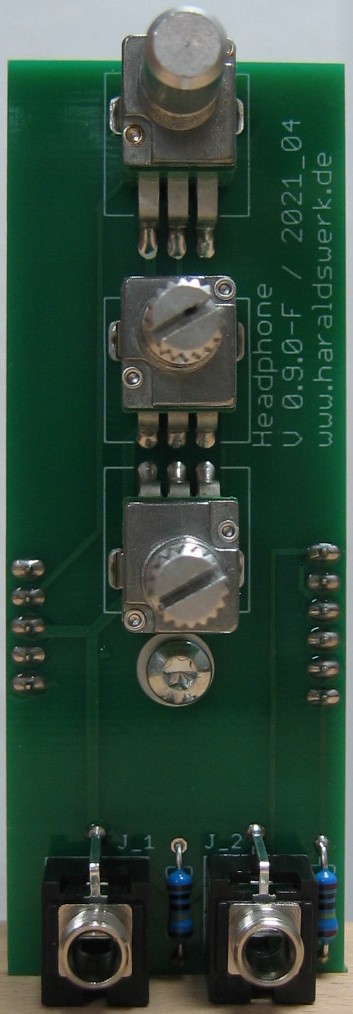
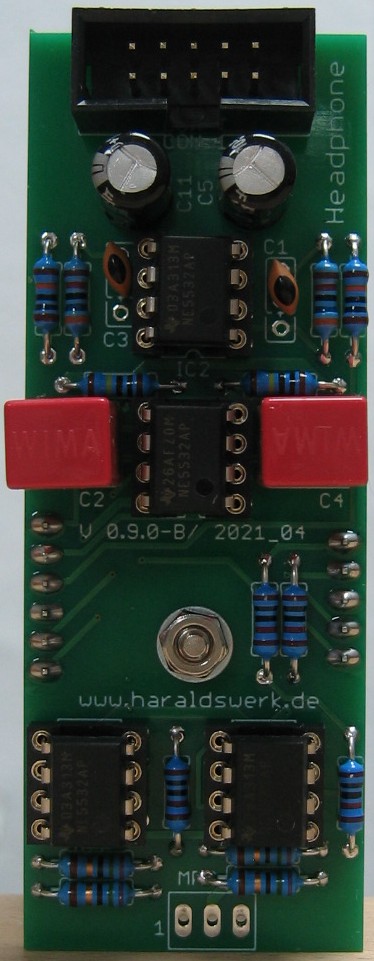
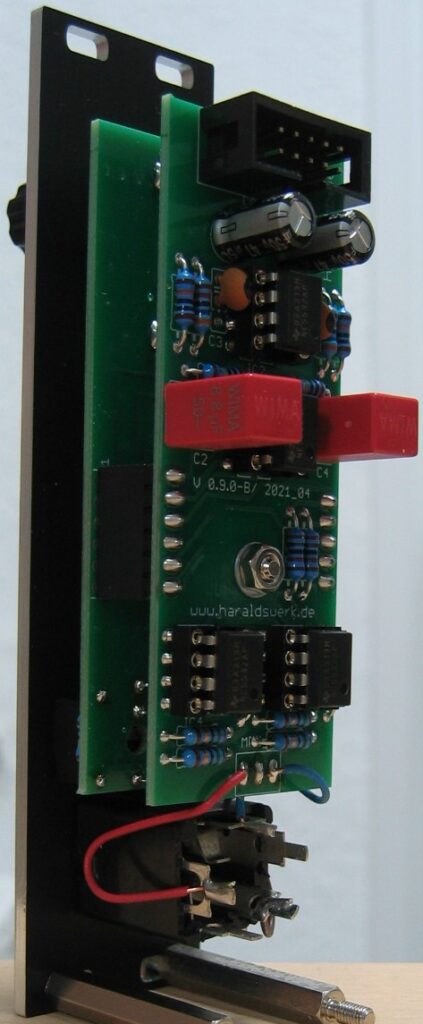
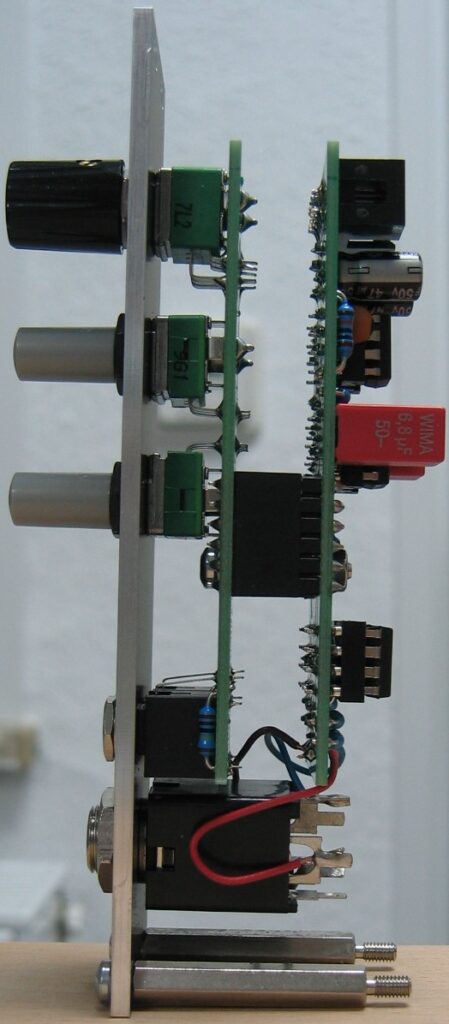
Trapezoid quadrature through zero VCO eXtended with waveshapers
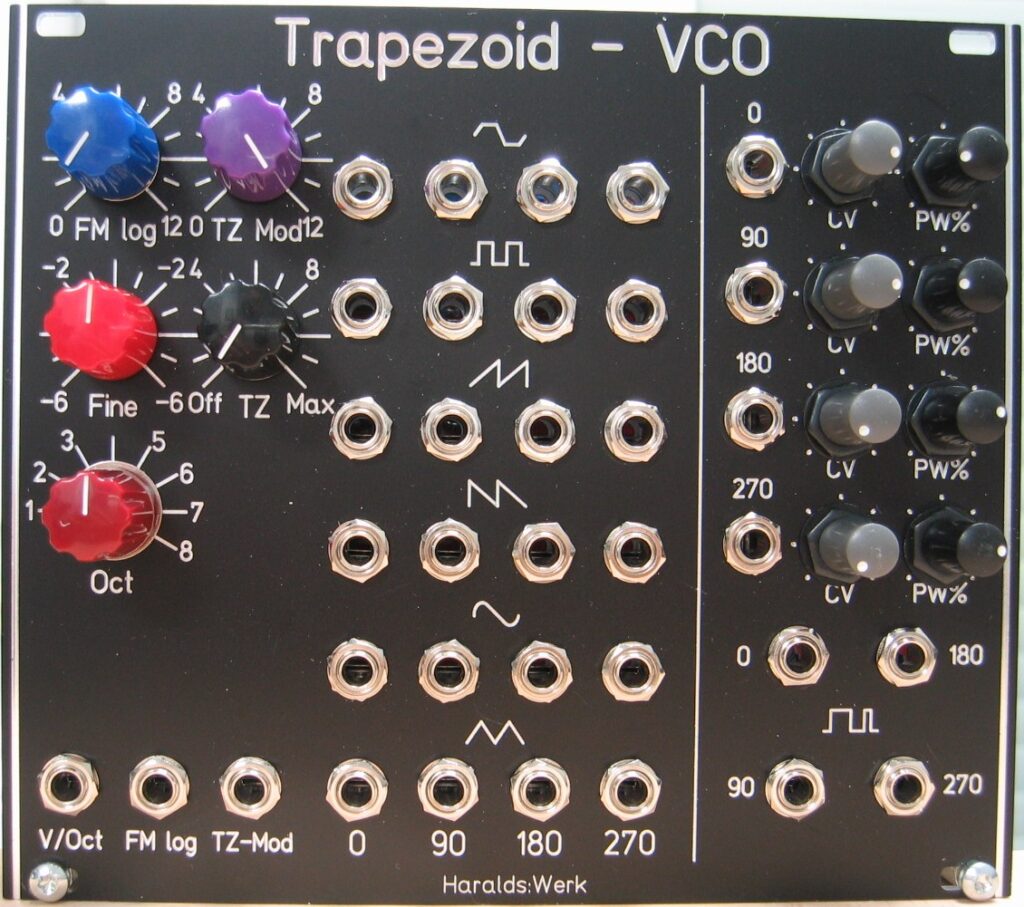
This is my extended version of the Trapezoid VCO core designed by Don Tillman. My first implementation for a 15V banana system with separate waveshaper can be found here. My second implementation for a 15V banana system with integrated waveshaper can be found here.This time I moved on to the 12V Eurorack format. The core is still based on the original design from Don (used with permission). I found the original article and schematic about the Trapezoid VCO on Don Tillman’s site (Link to original article from 19 July 2003). The article consists off three parts with the core implementation in part 2. I kept the basic idea and changed nearly everything else. I use an other exponentiator scheme and temperature stabilization. Another reference voltage device is used. A octave switch is added. And quadrature square outputs are implemented. As well as the additional waveforms triangle, sine, ramp up, ramp down and pulse.
For the extended Version I added the two missing outputs for ramp up, ramp down and pulse. Now this VCO has all the usual wave outputs, all 90deg apart.
Specs and features
- Trapezoid quadrature output
- Square quadrature output
- Triangle quadrature output
- Sine quadrature output
- Pulse output, 0deg, 90deg, 180deg, 270deg
- Ramp up output 0deg, 90deg, 180deg, 270deg
- Ramp down output 0deg, 90deg, 180deg, 270deg
- Octave switch
- Through zero modulation
- PWM input for 0deg, 90deg, 180deg, 270deg pulse
- V/Oct, FM log and trough zero CV input
- Temperature compensated
- Fine frequency setting
- Runs on +/-15V and +/-12V
- Power consumption around 150mA each rail
The documentation and the Gerber files for download can be found in my website.
There are to much schematic to post here. Please refer to my website. Only pictures here.
